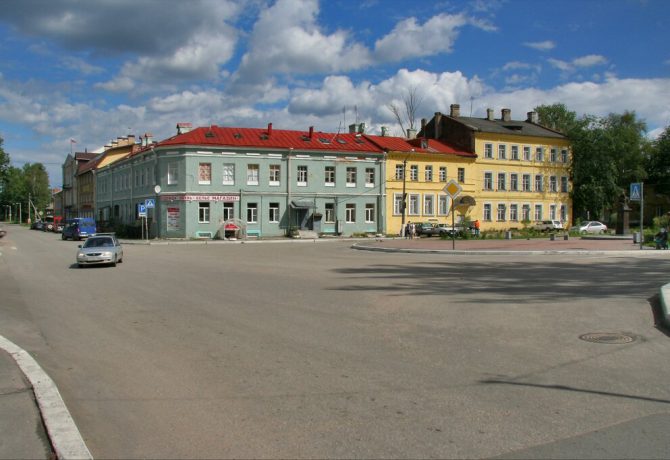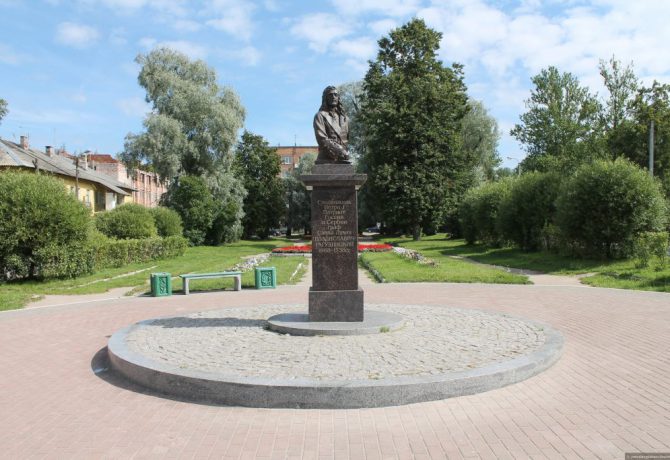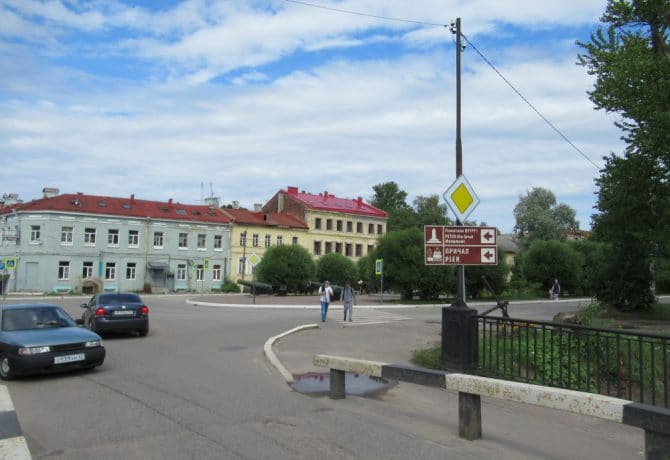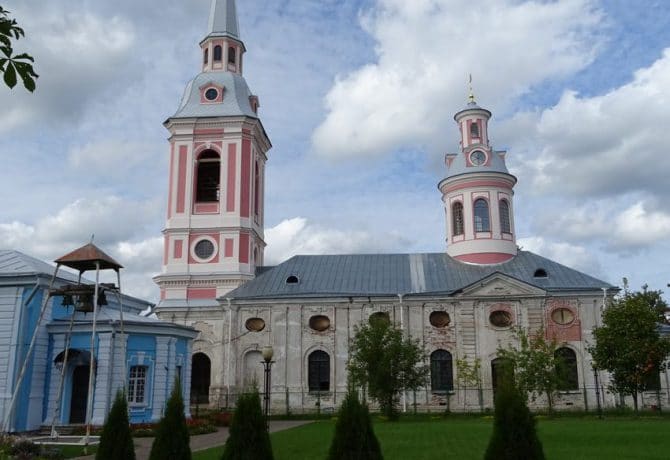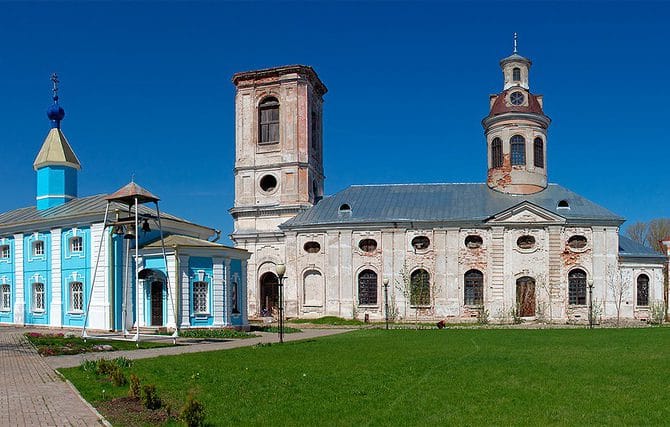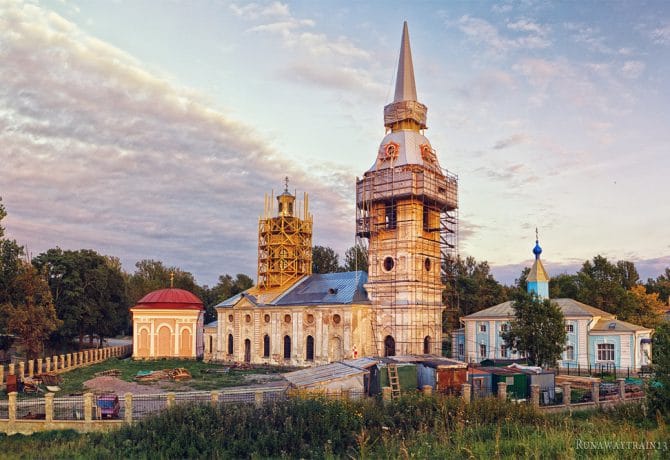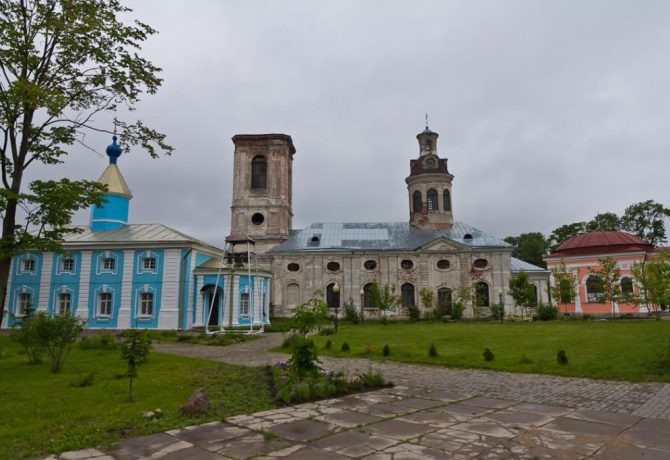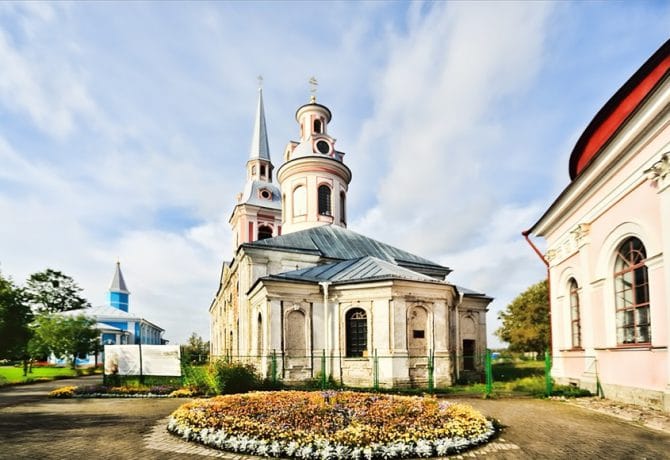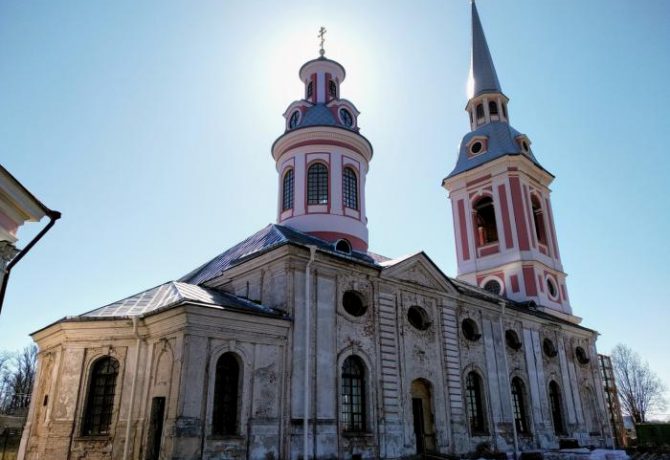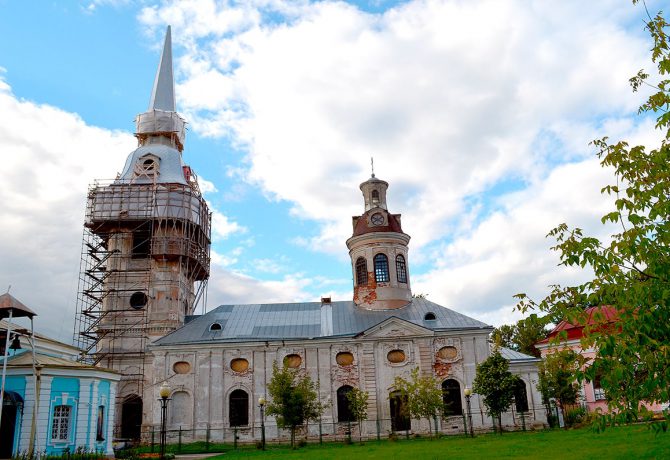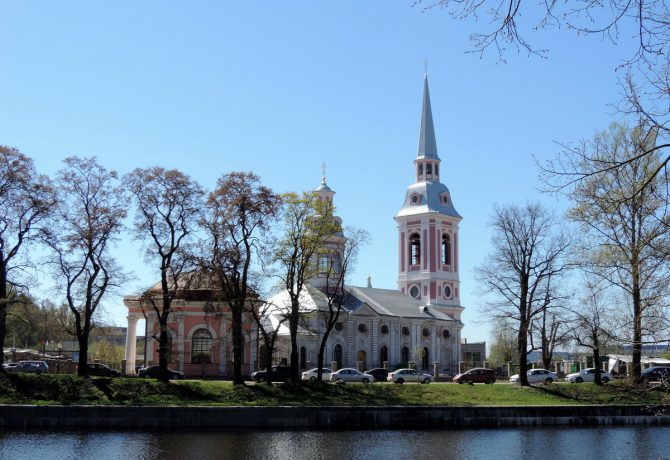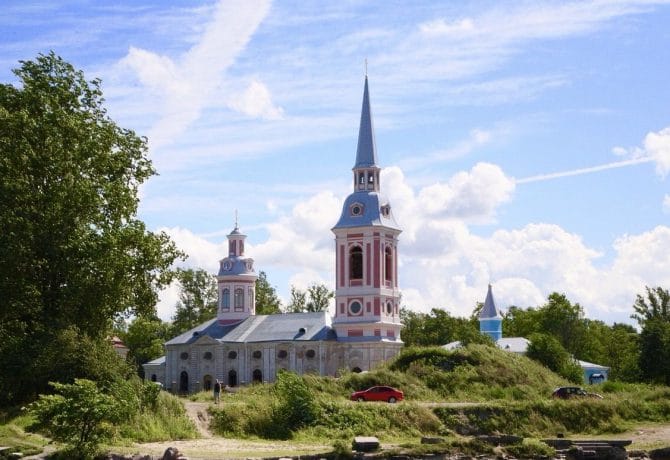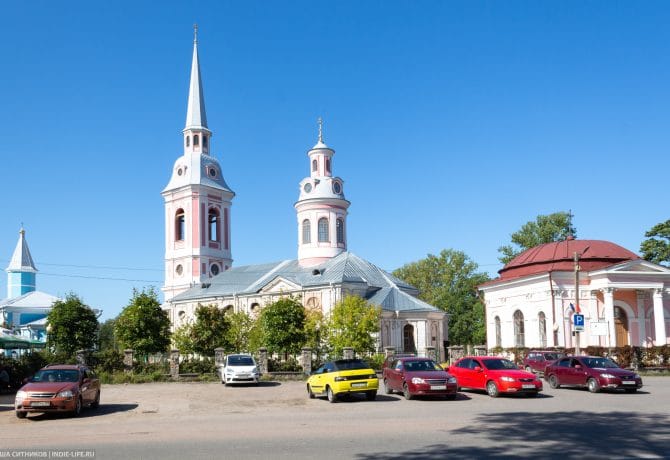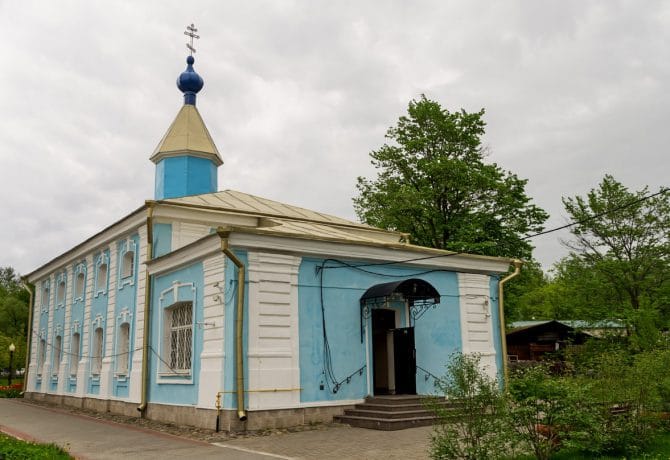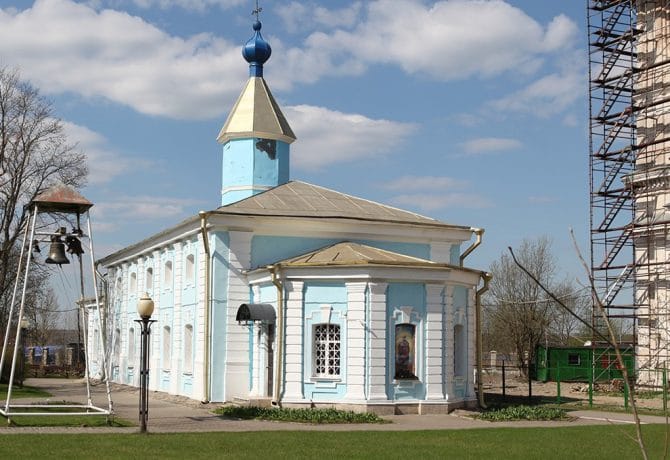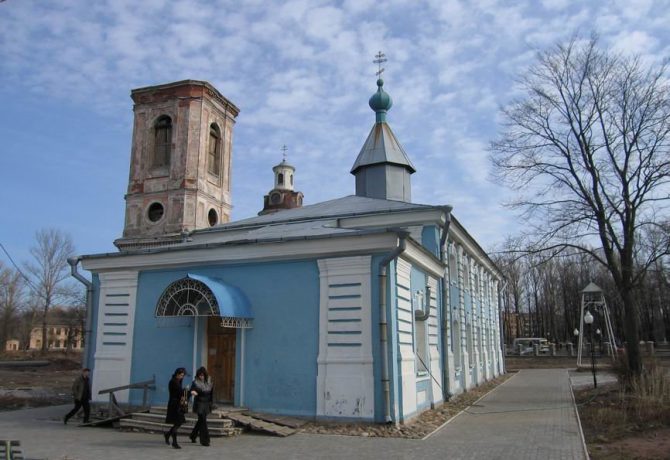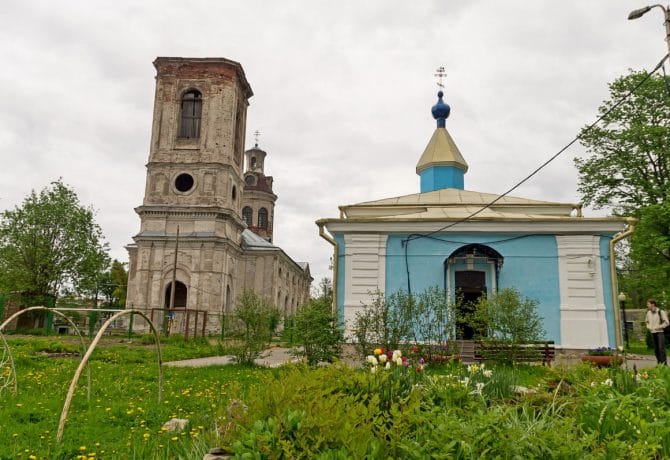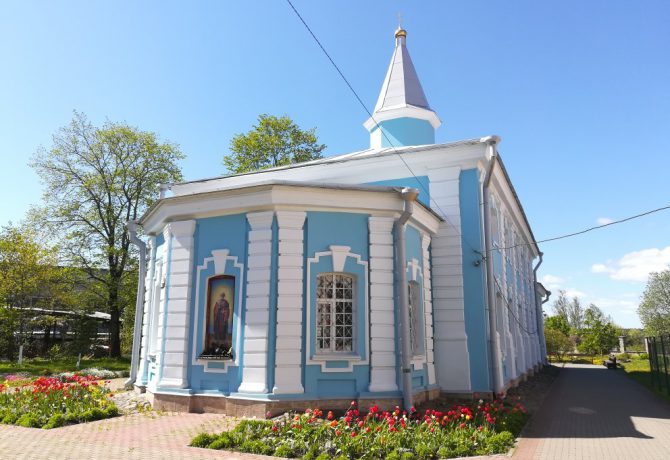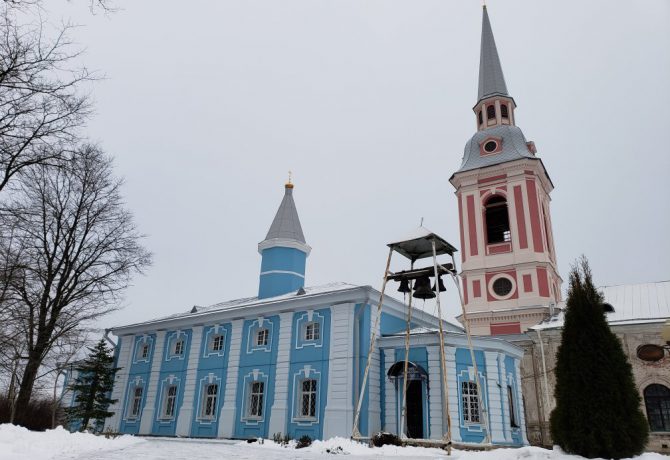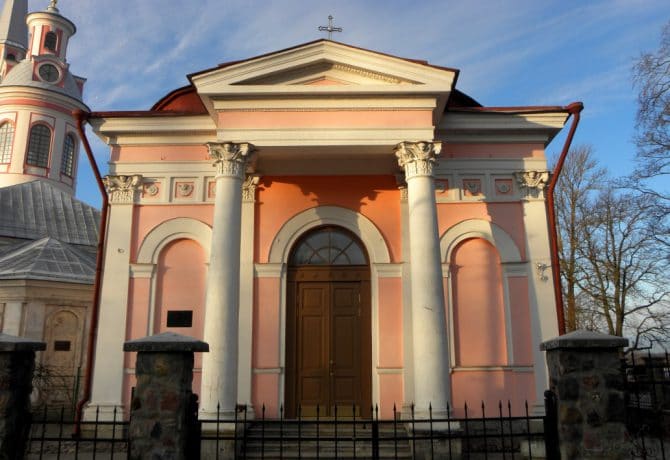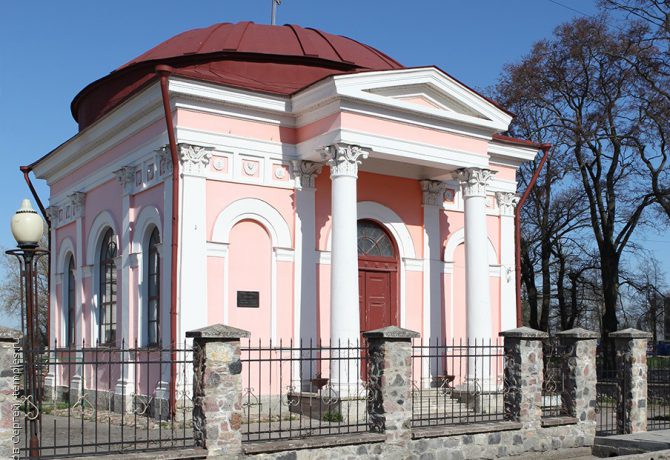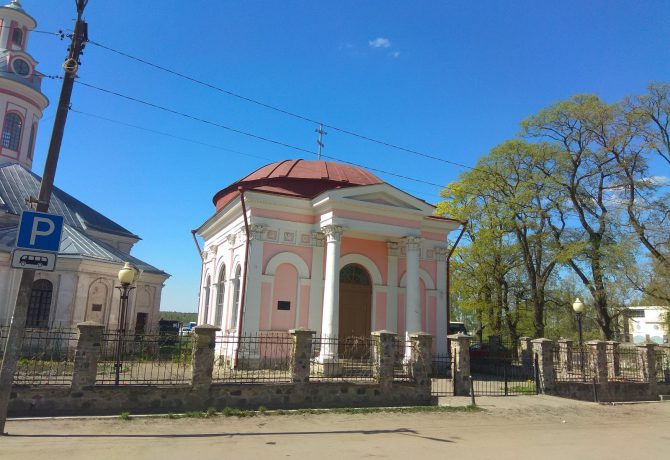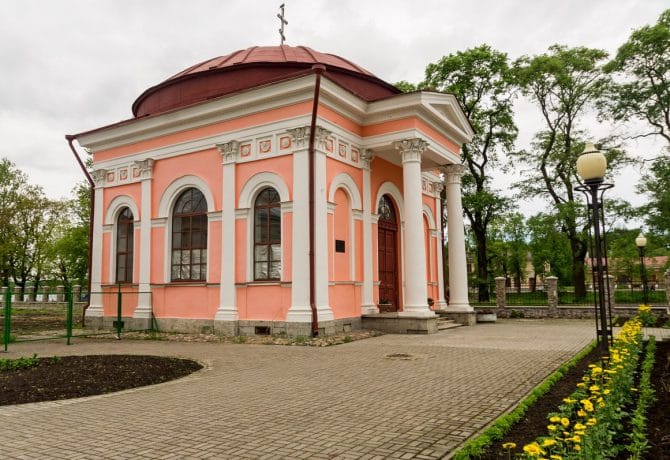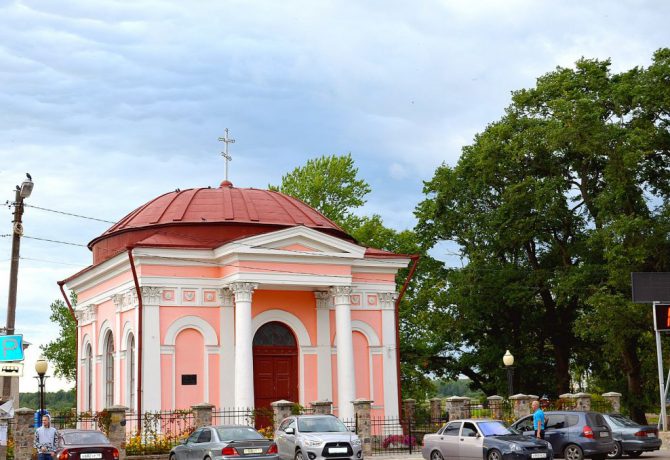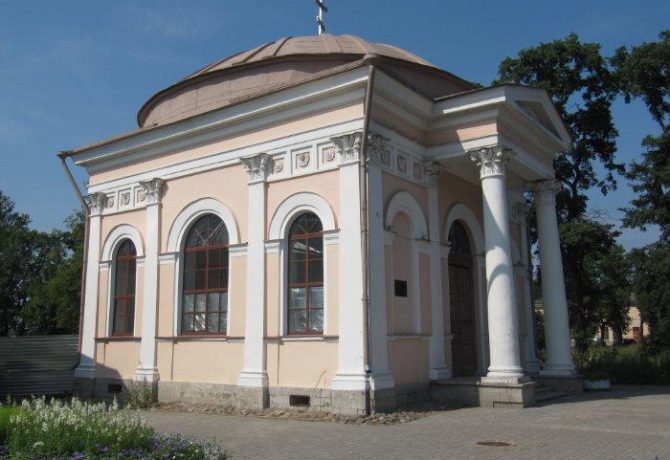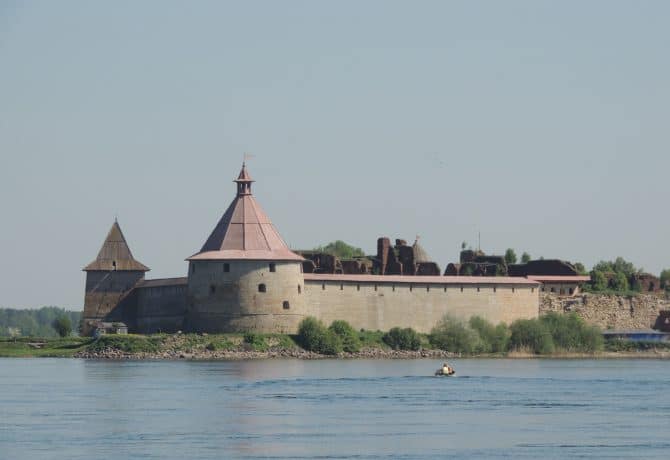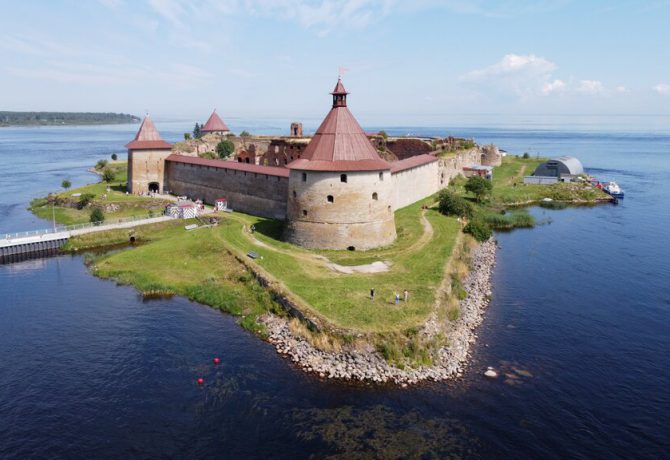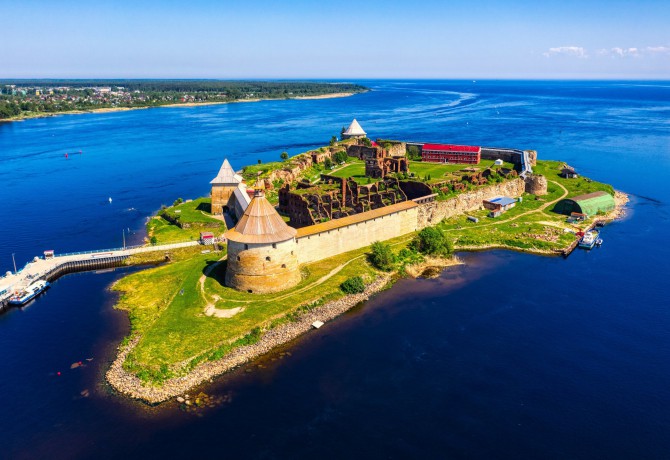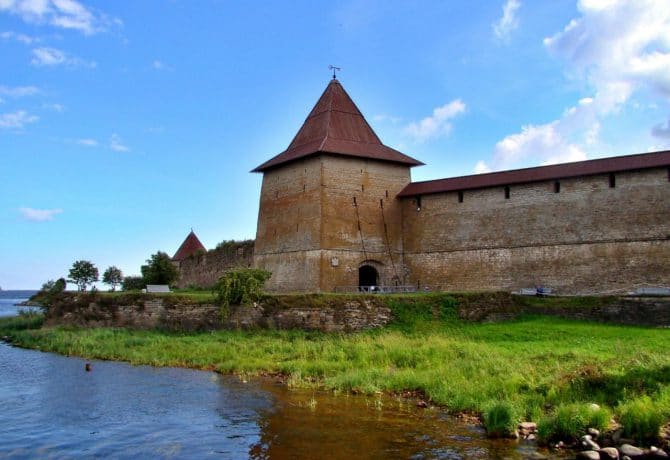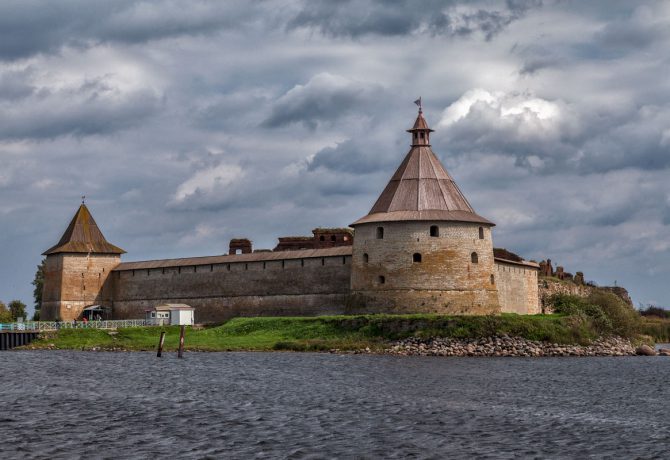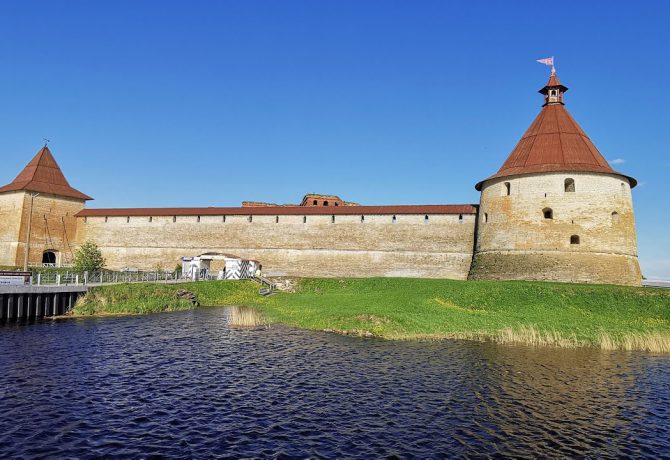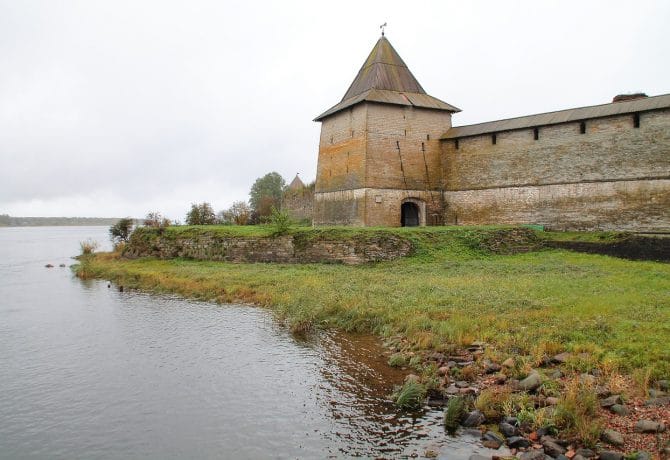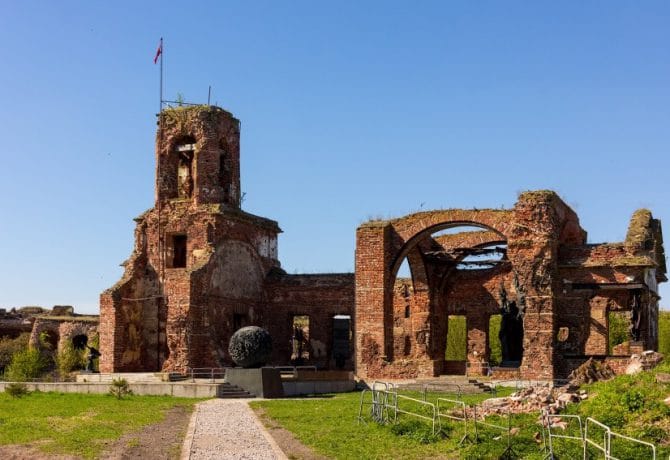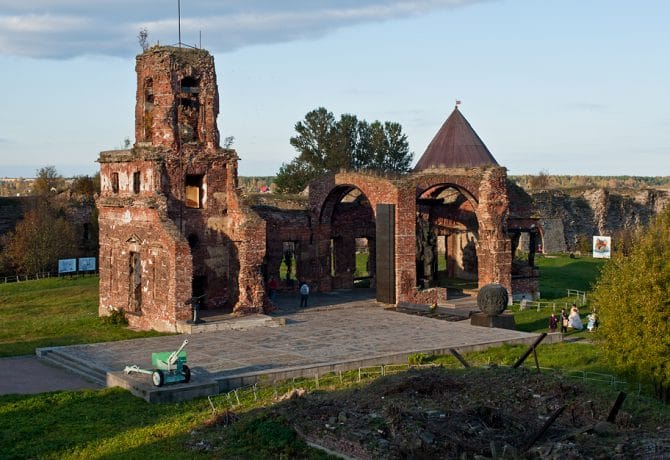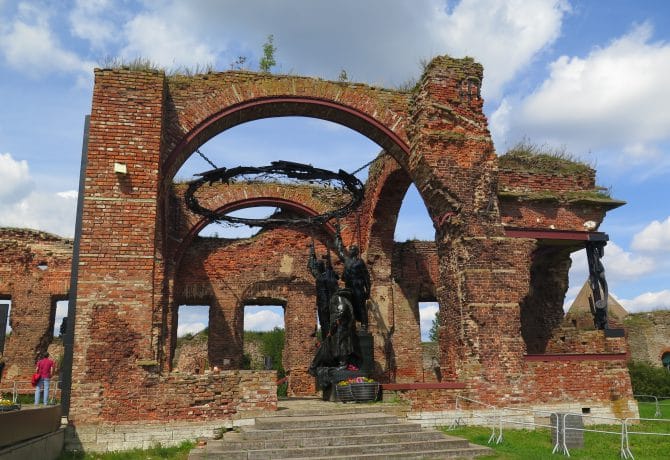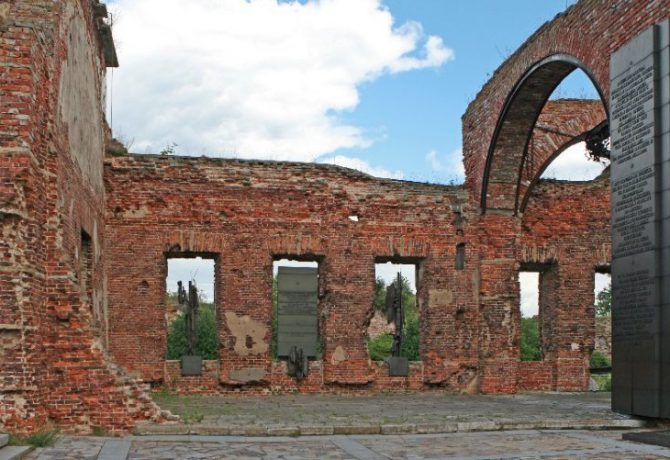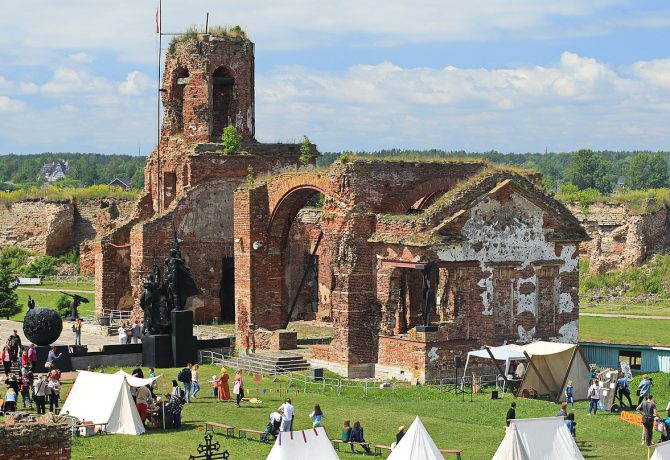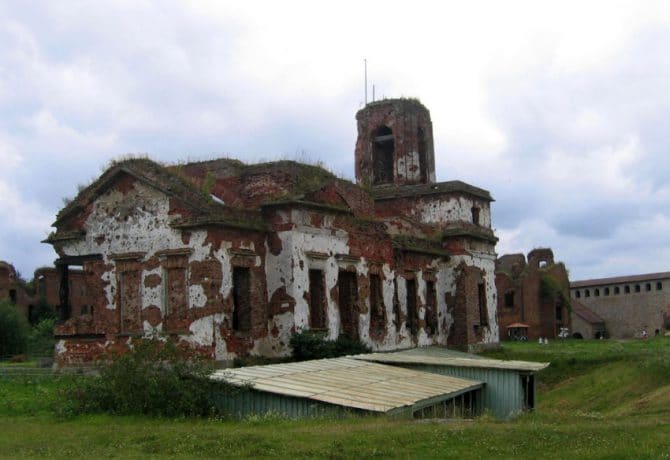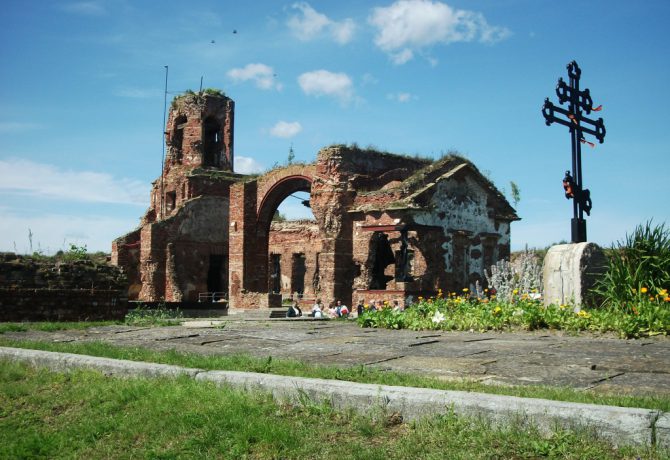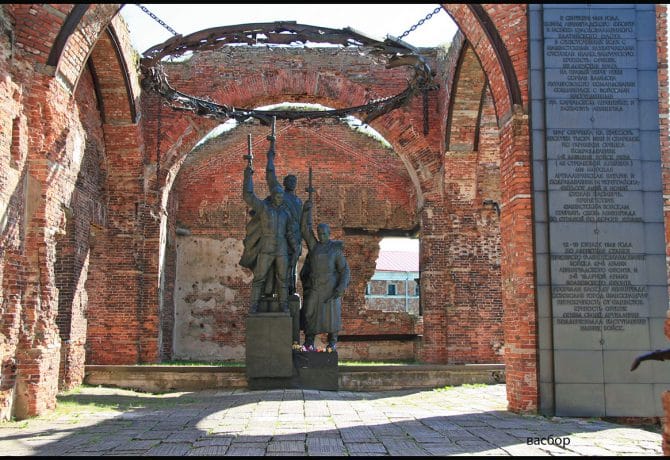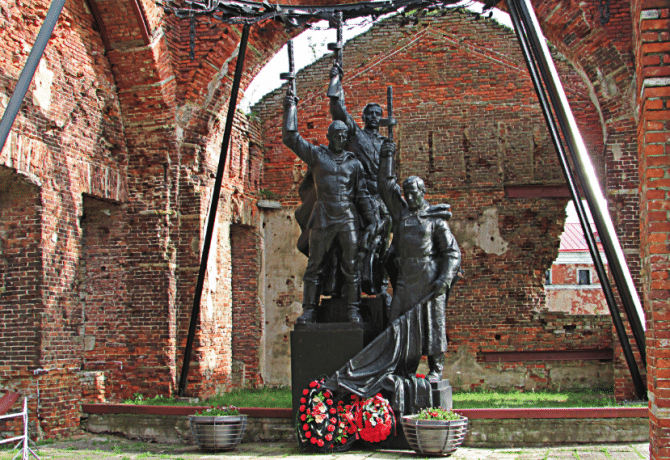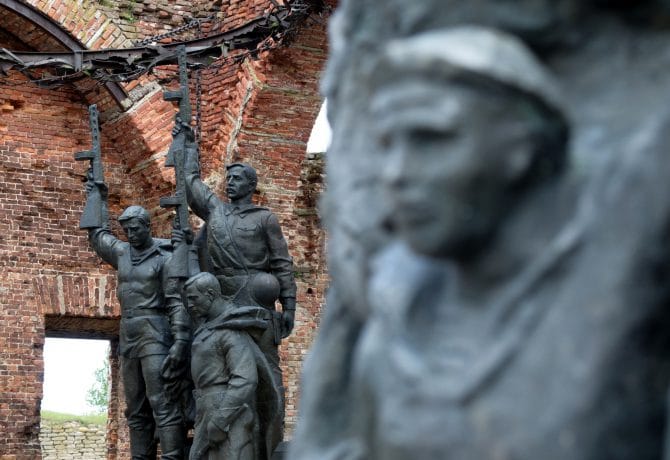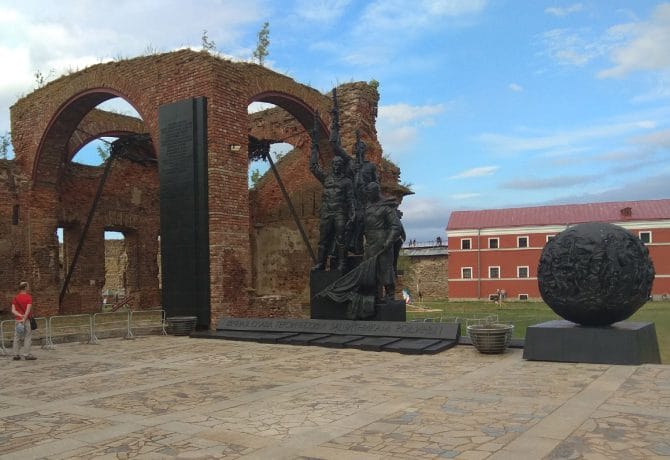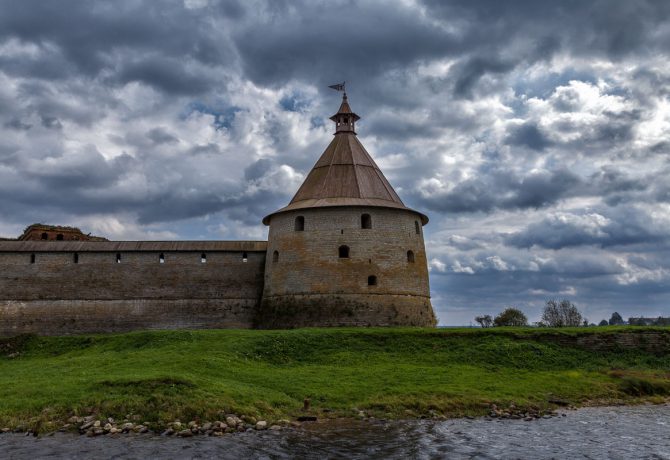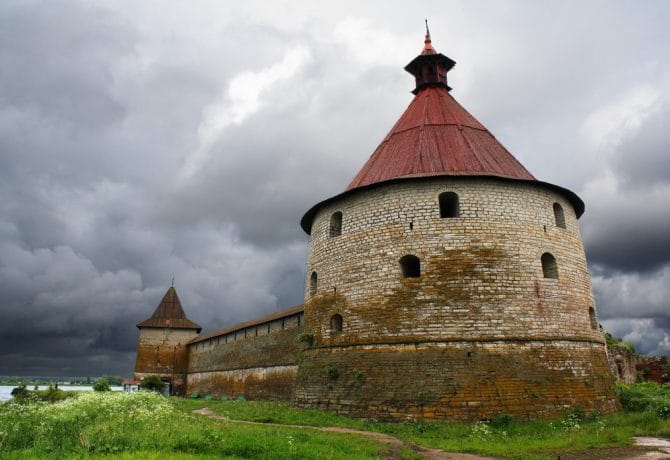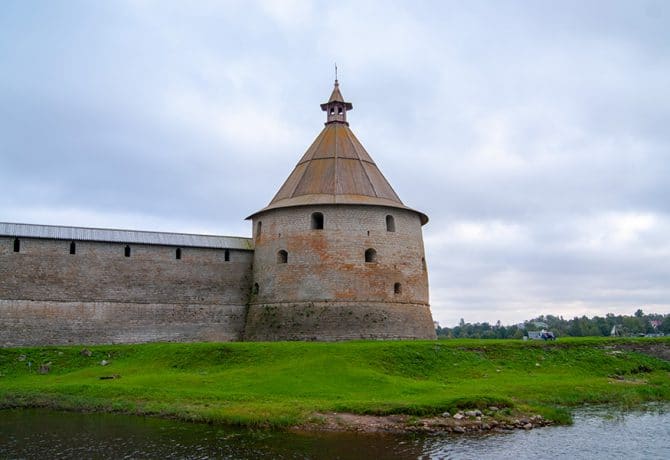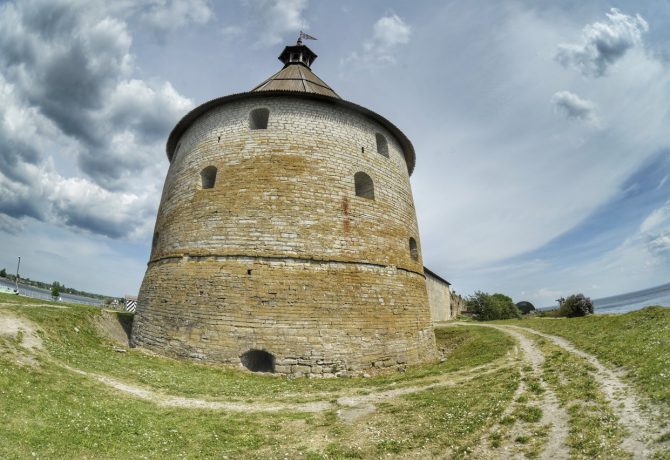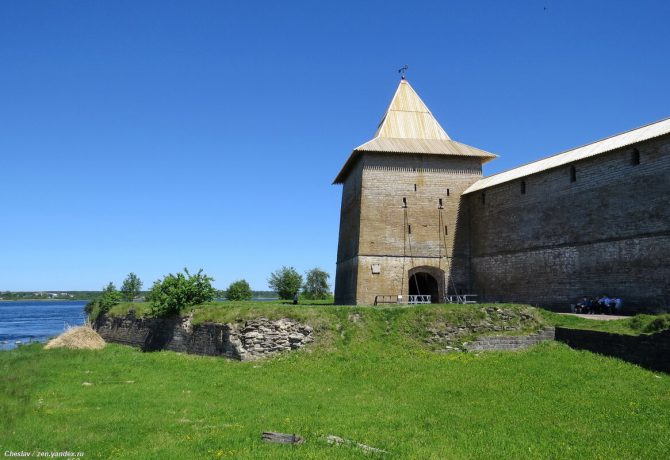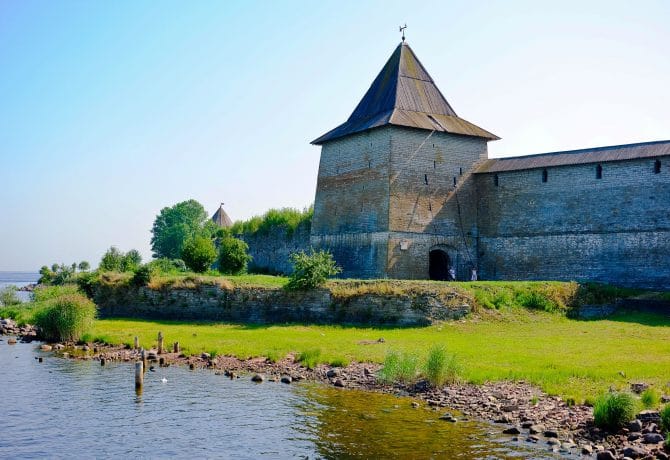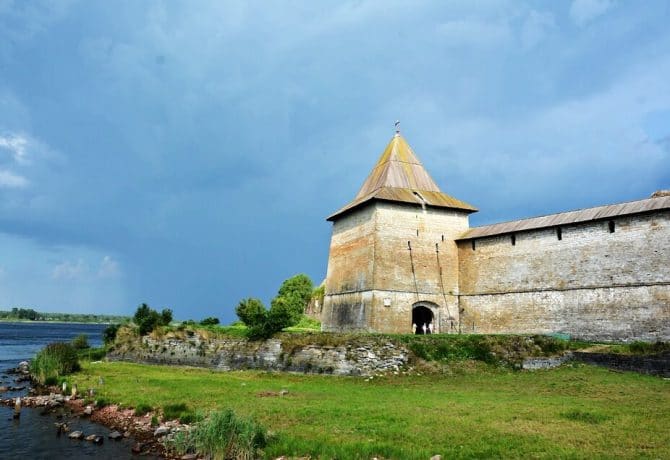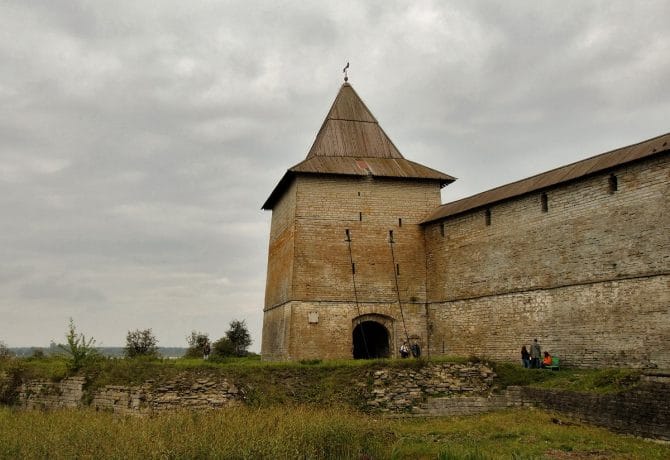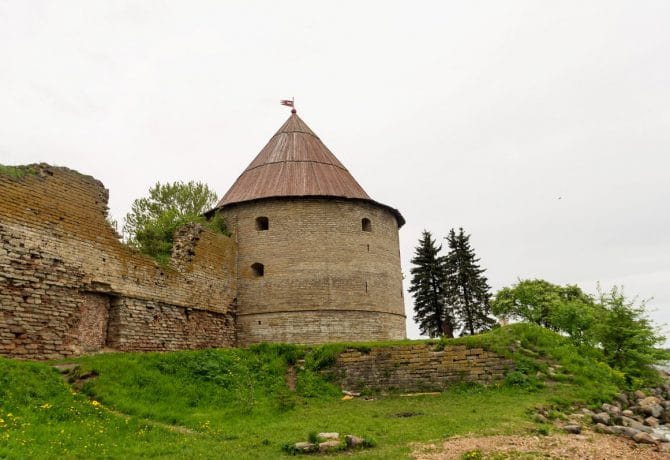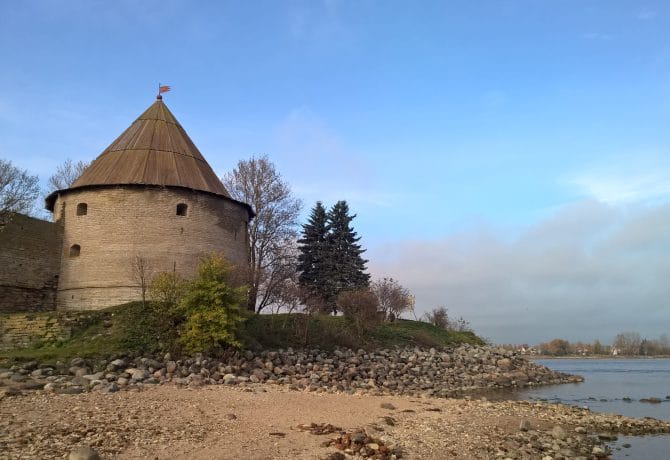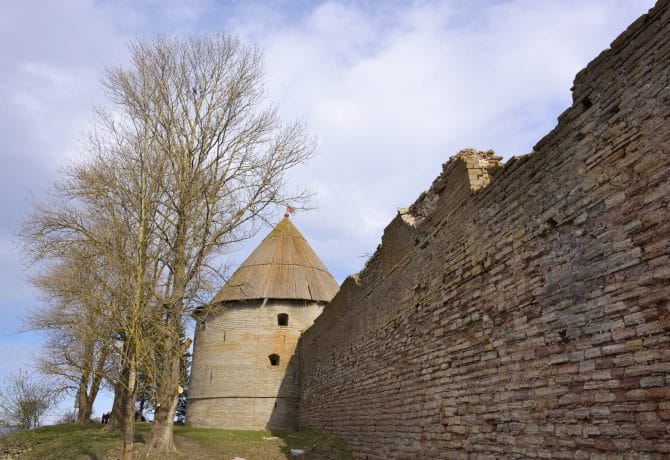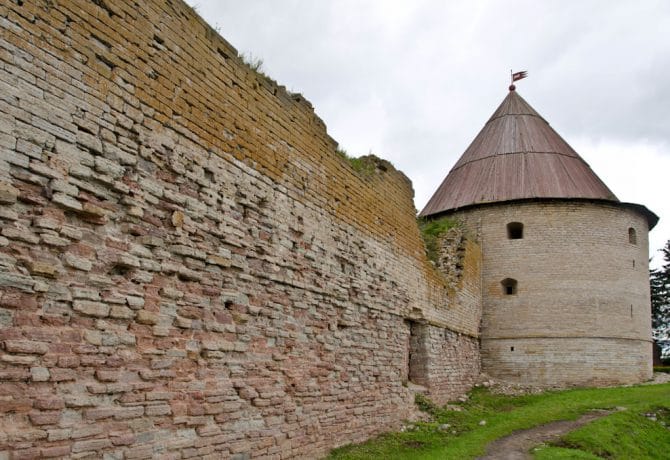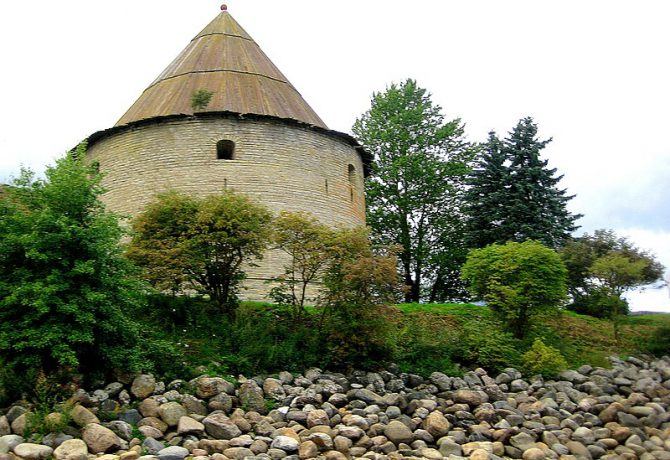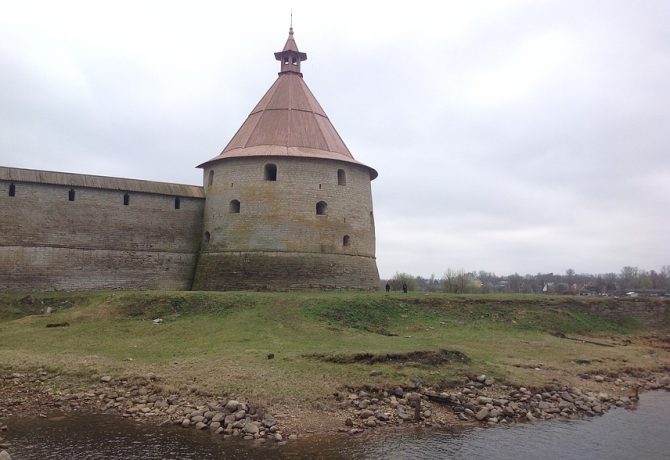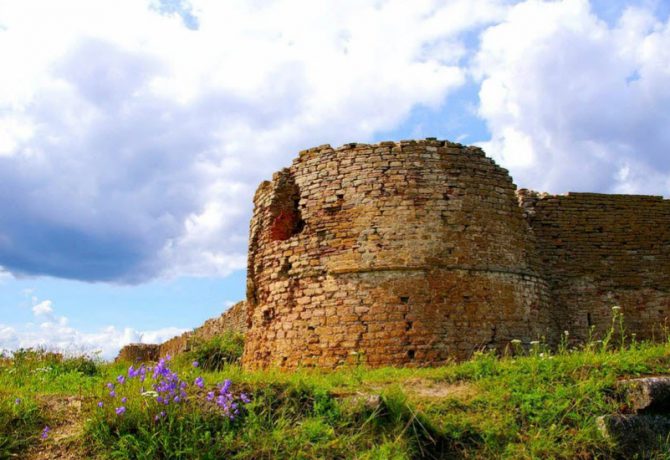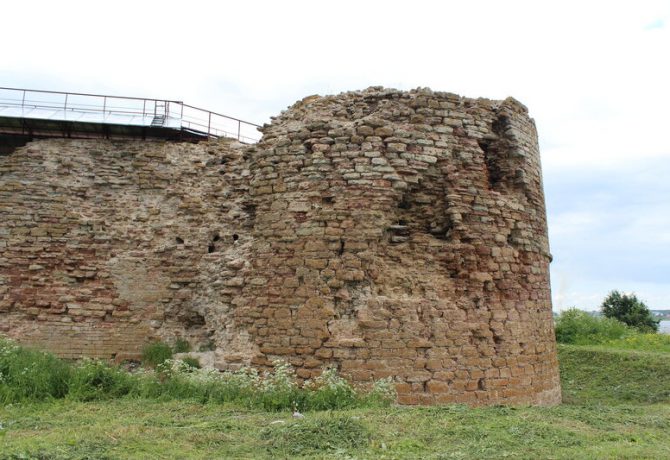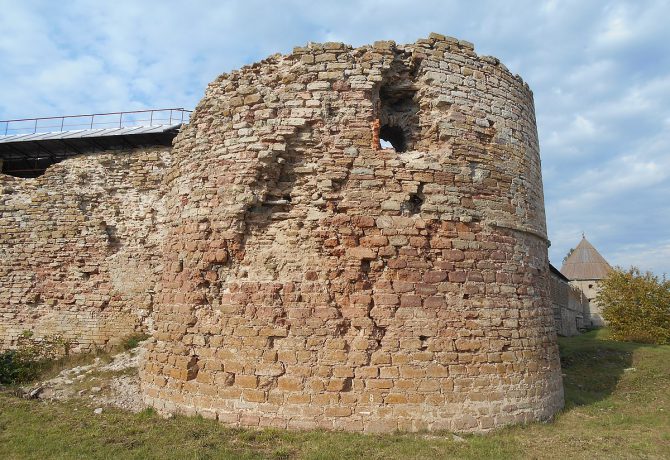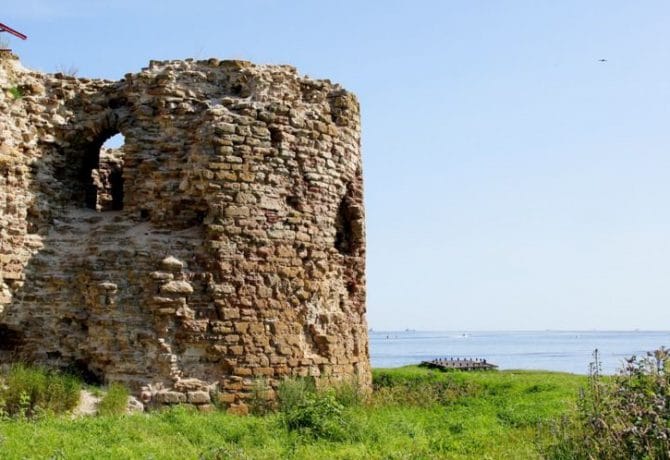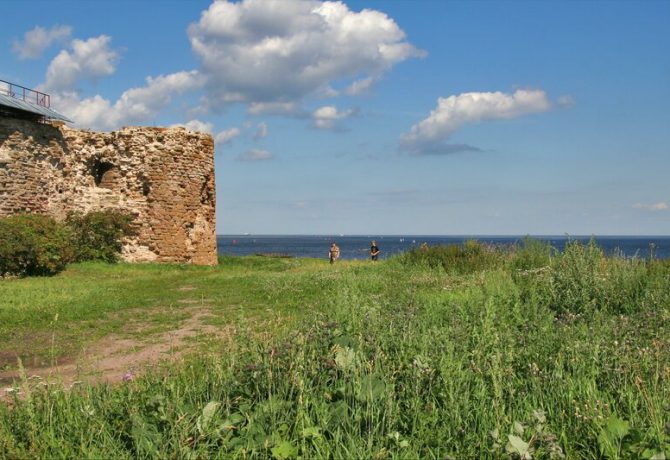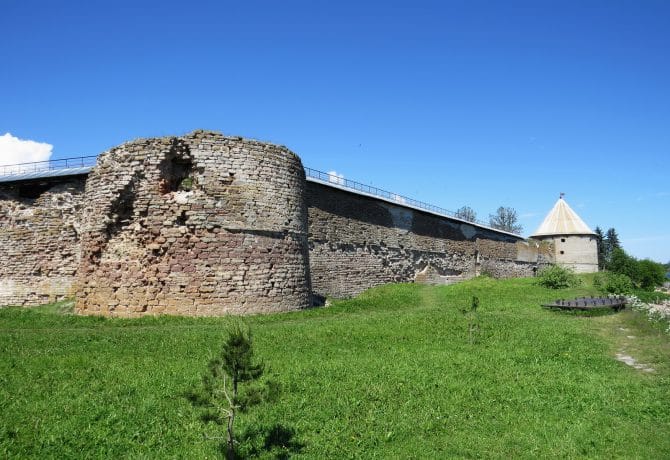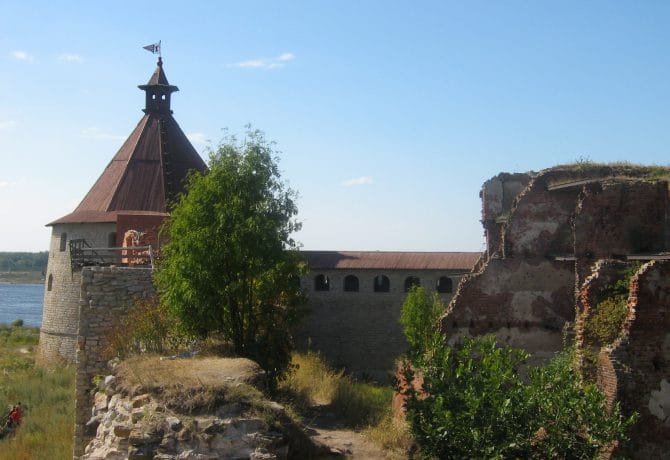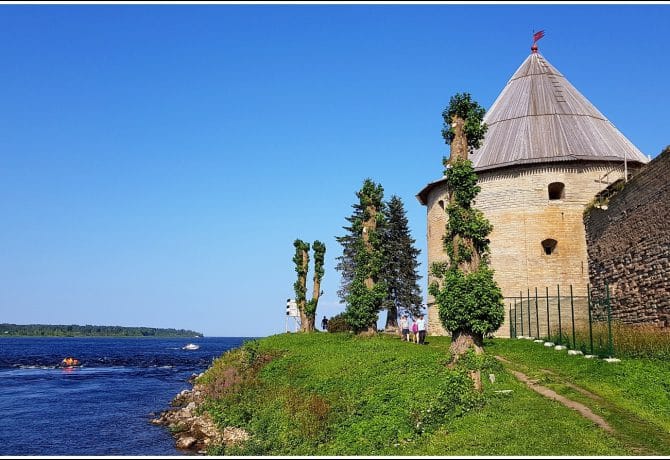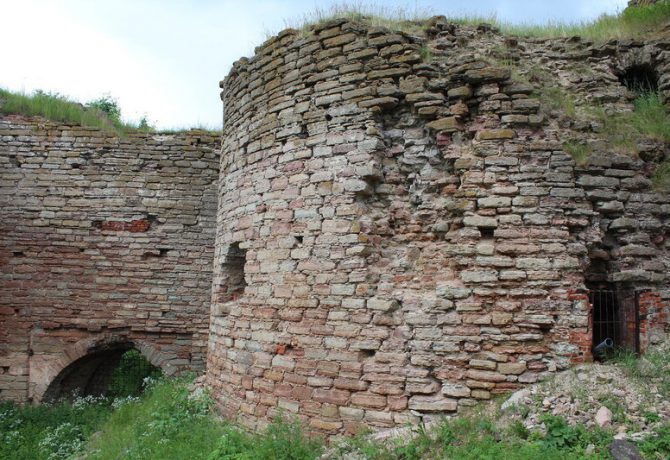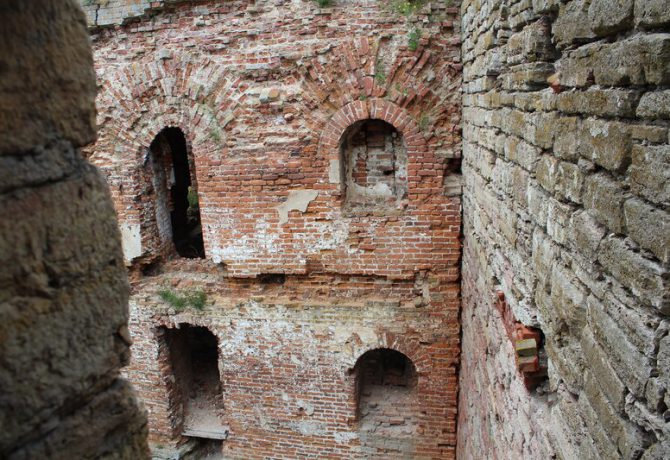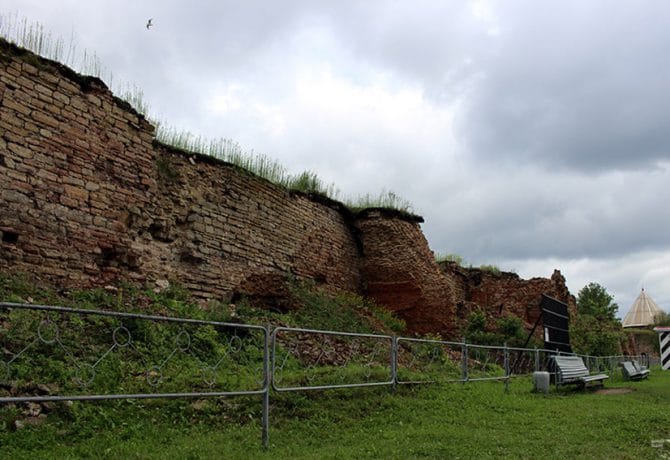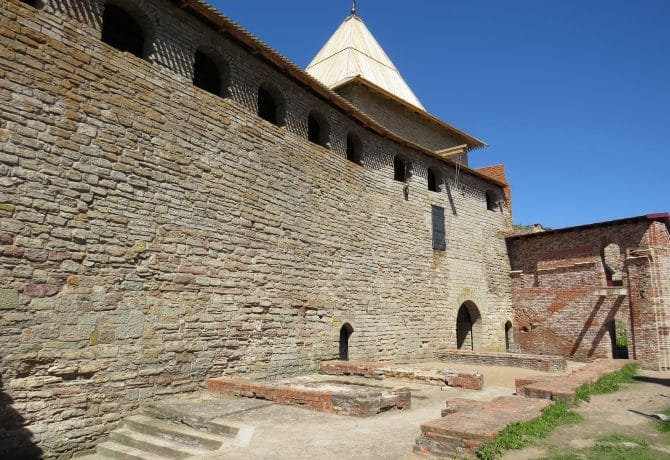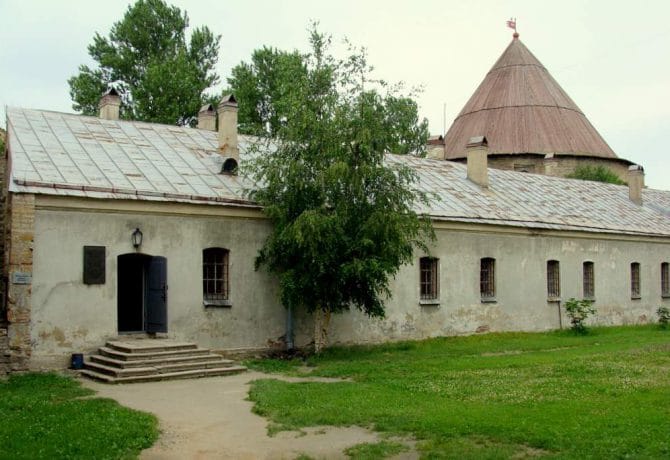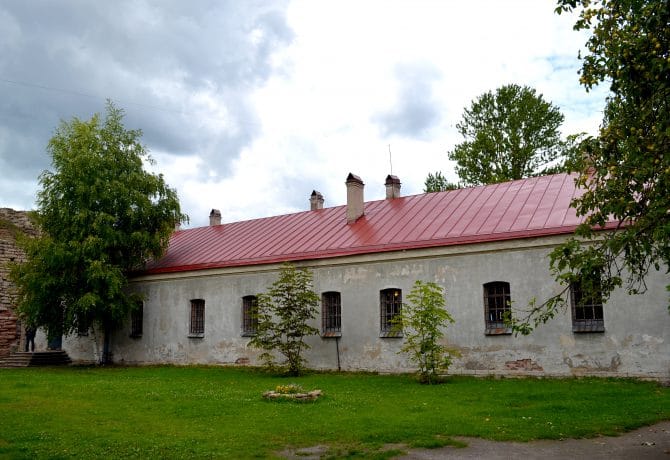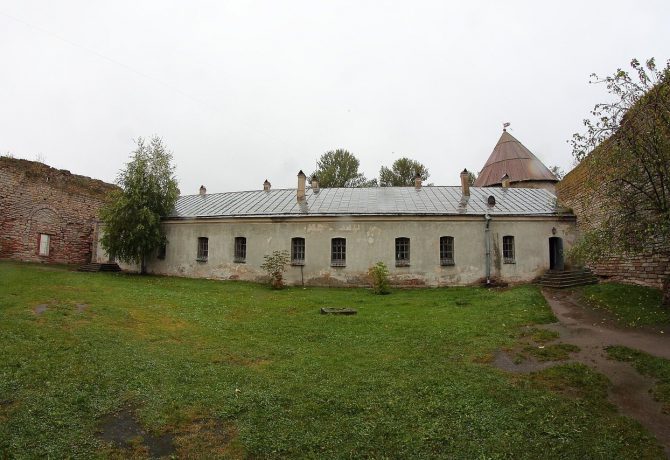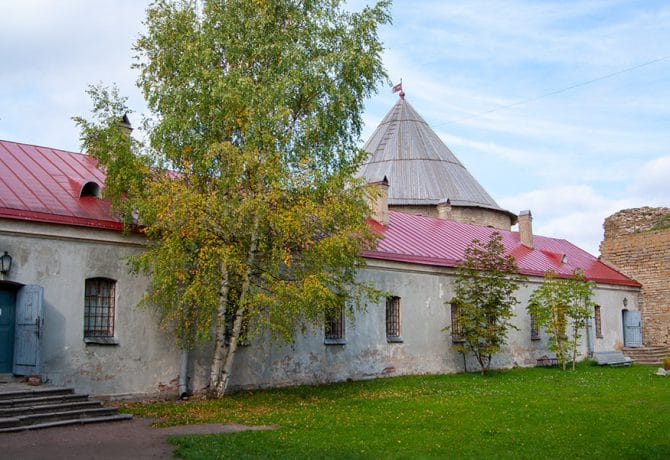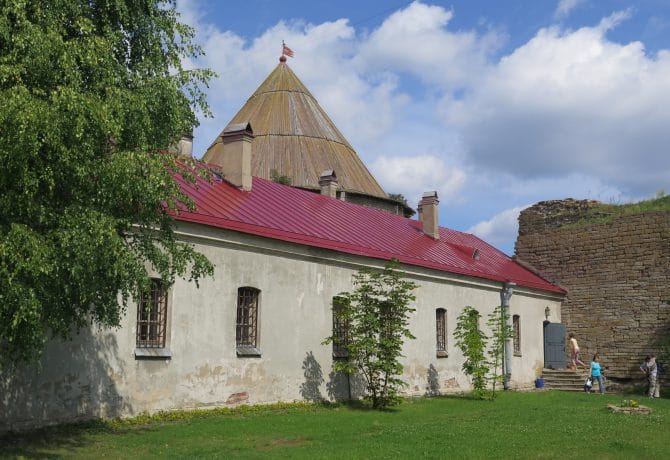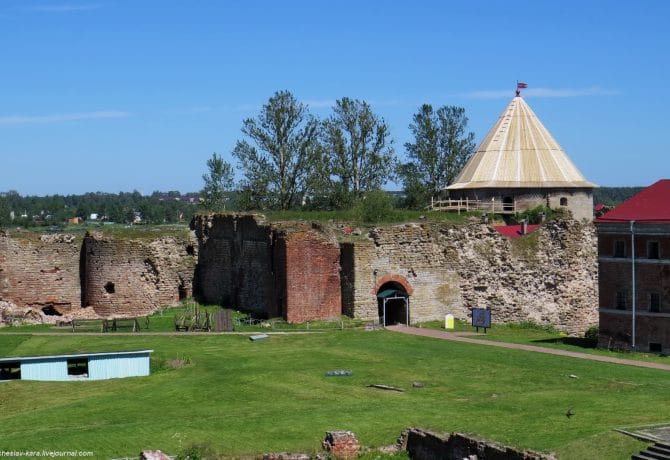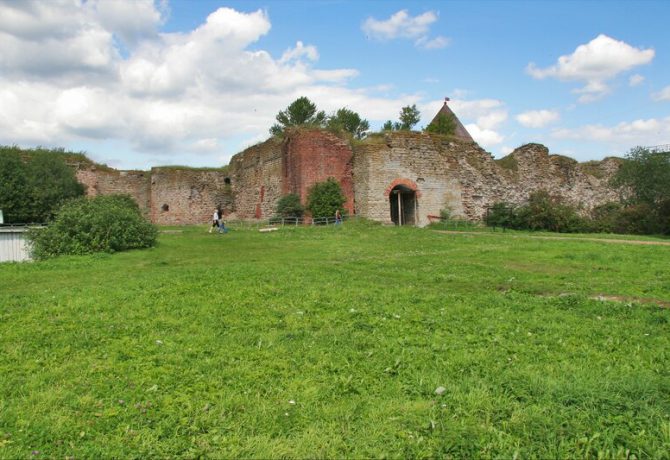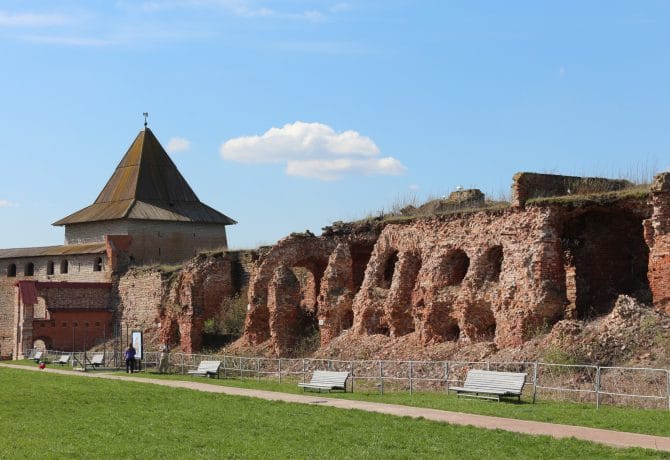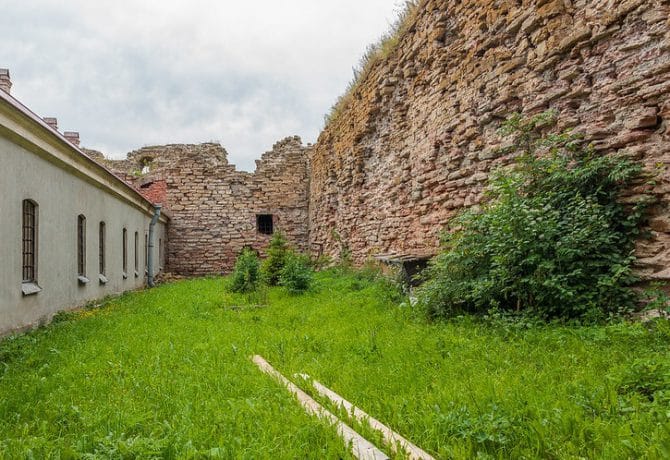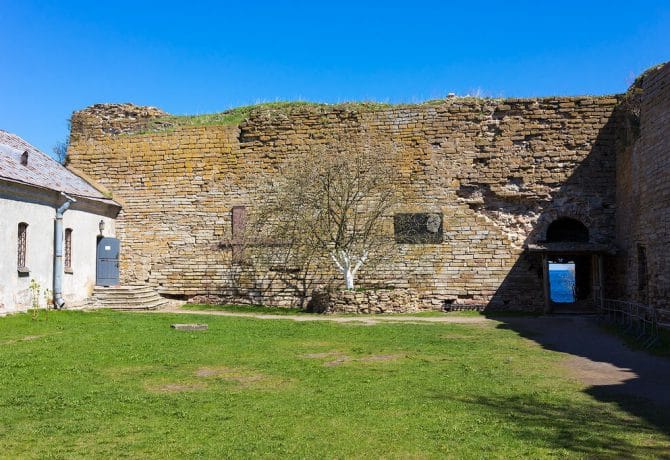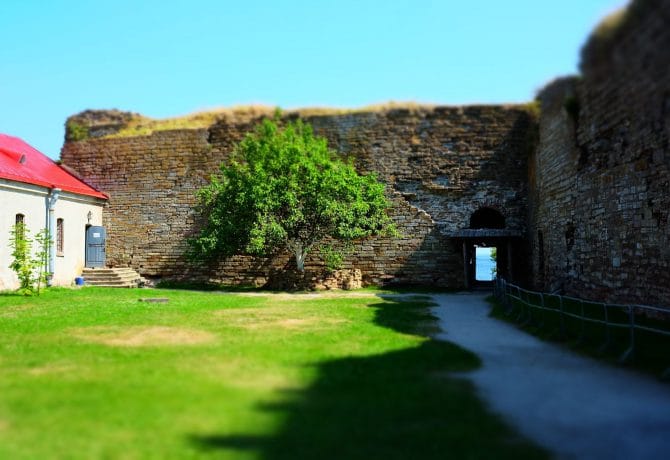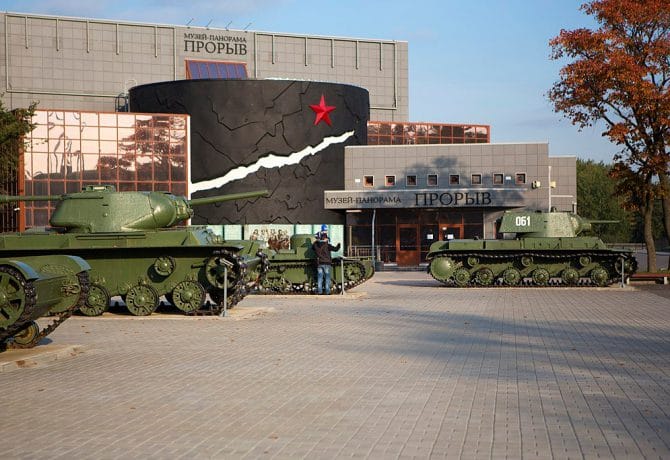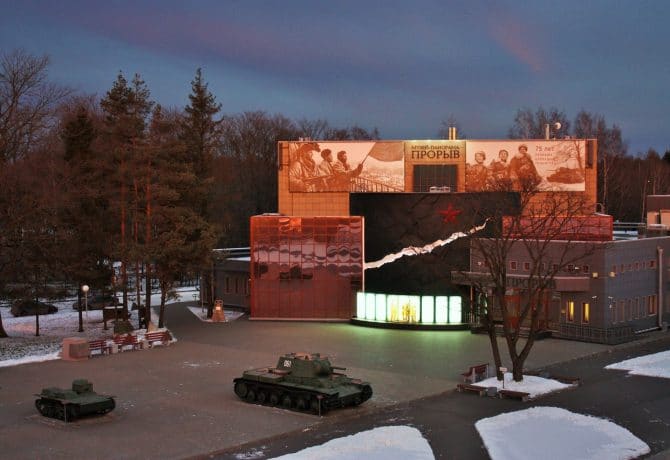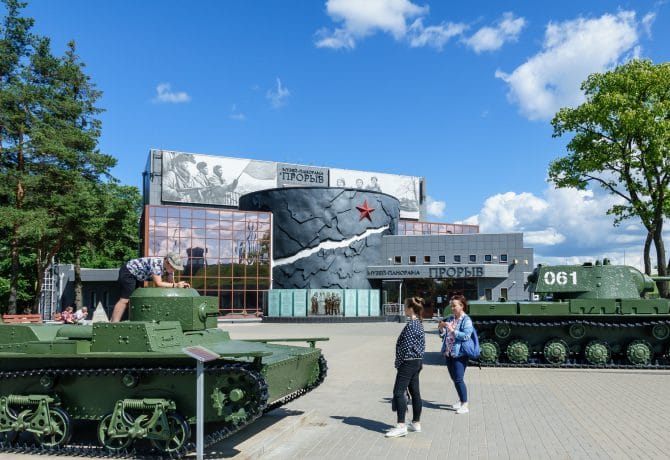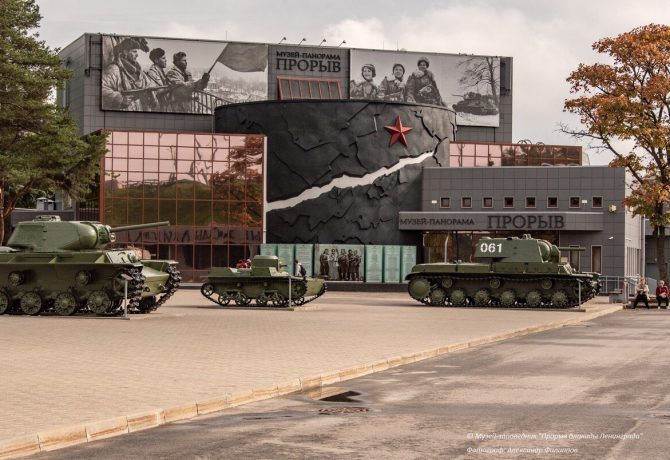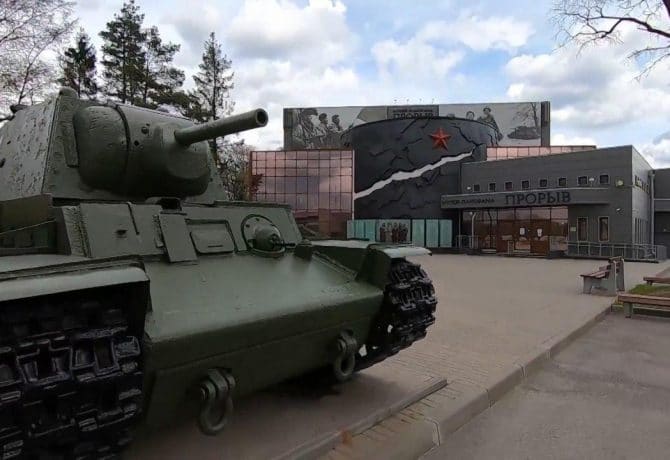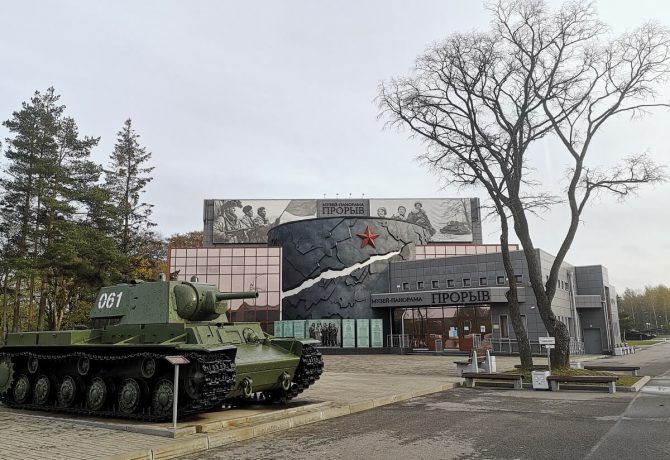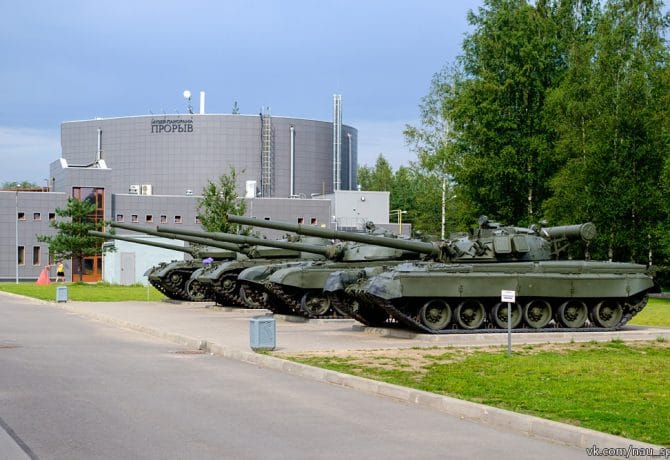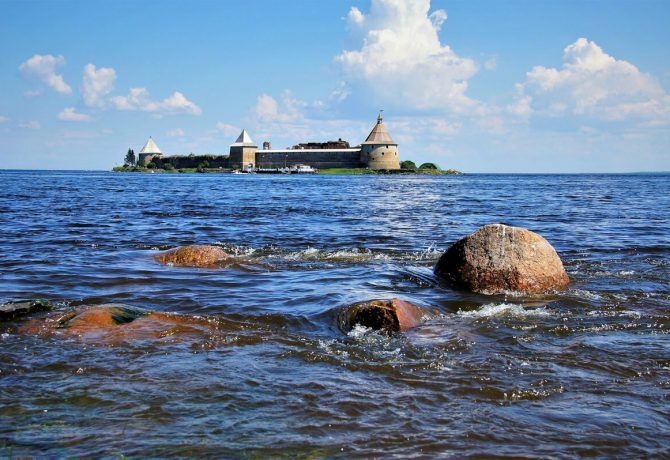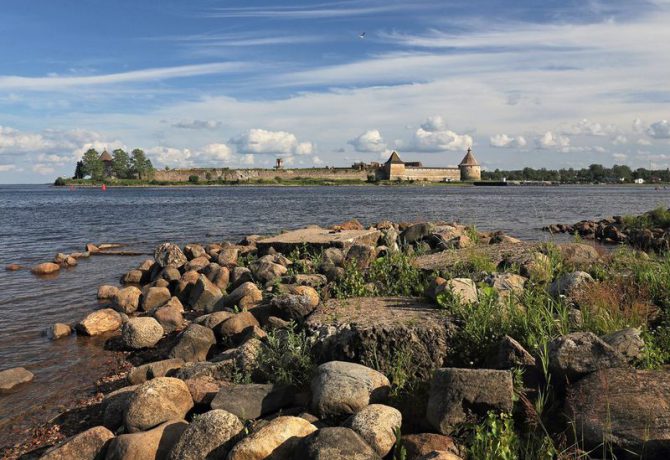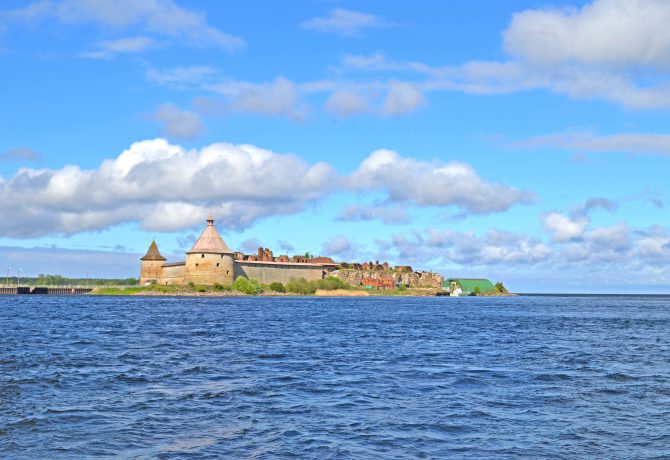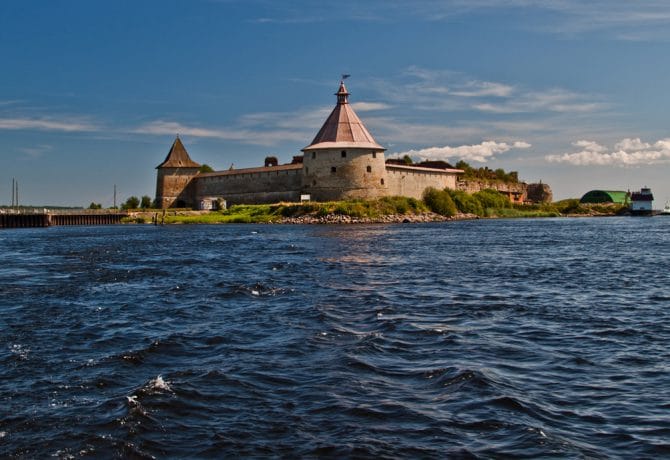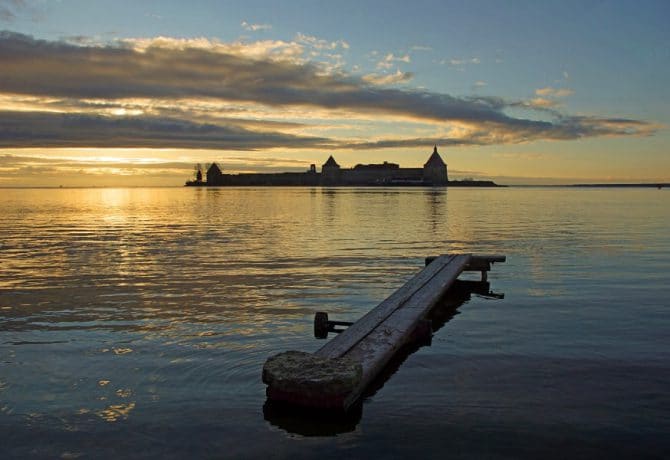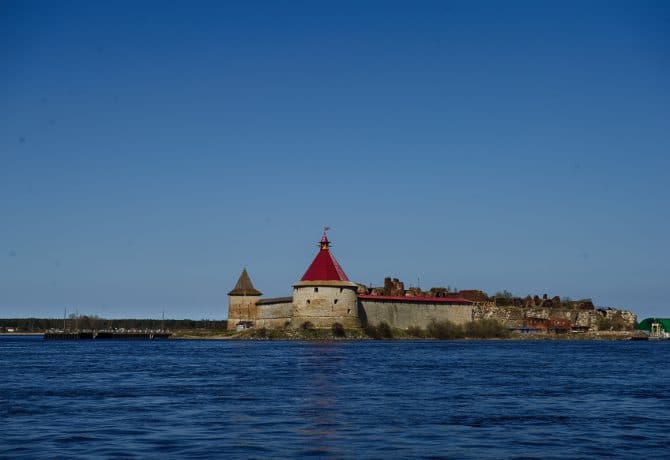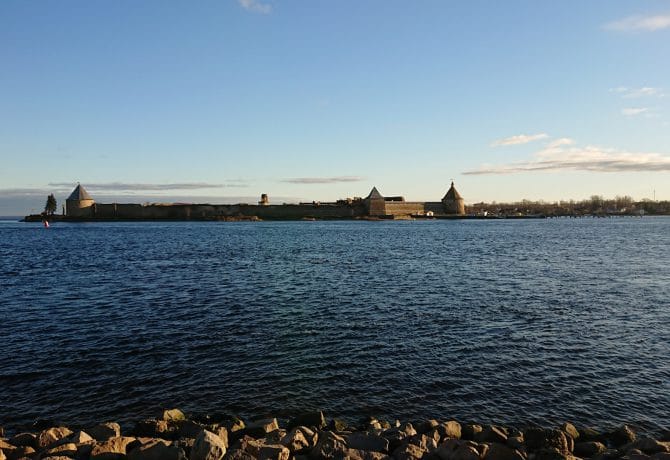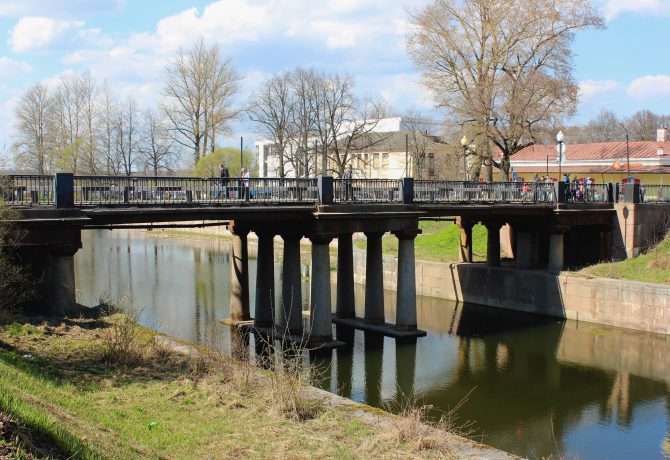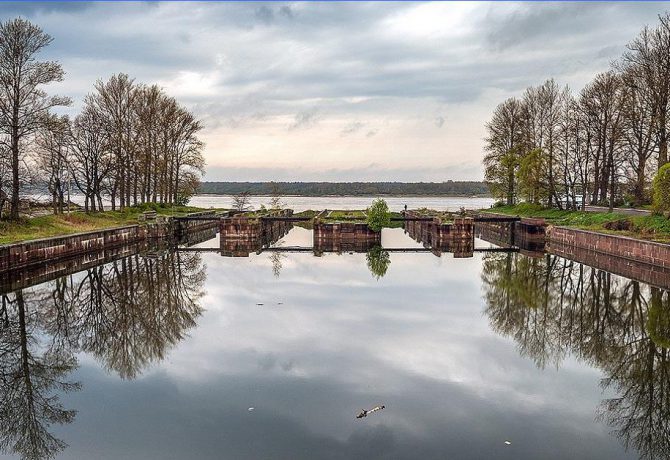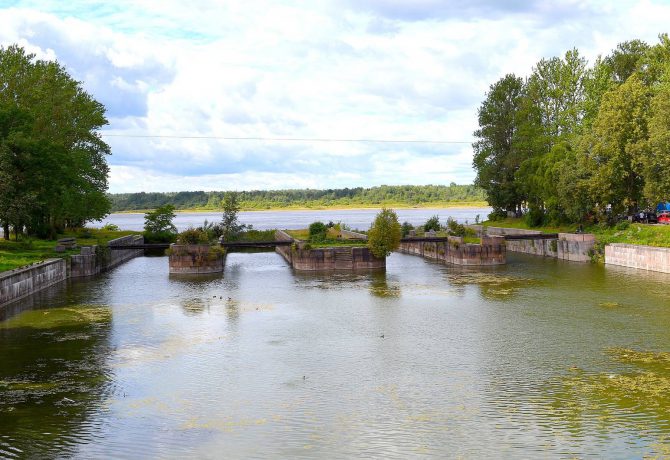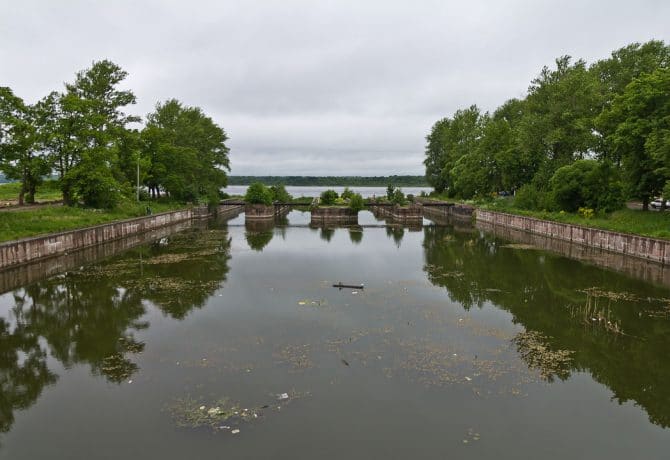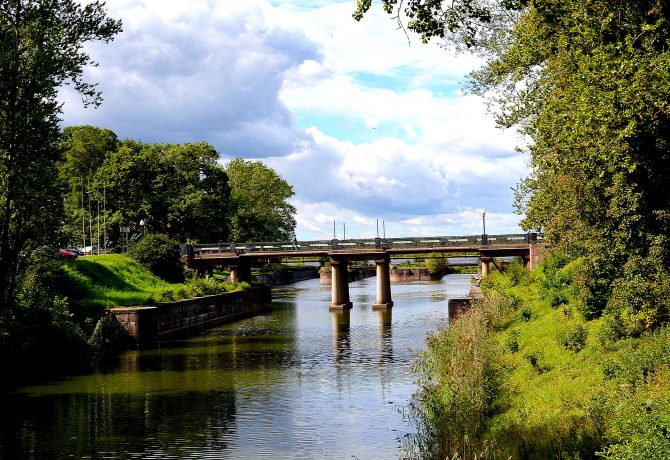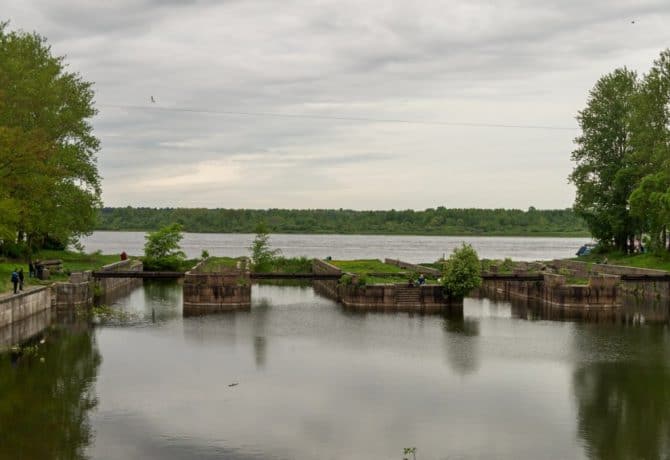Shlisselburg is located just fifty kilometers from St. Petersburg. A tiny, but proud town, which is suitable for the Northern capital, if not in fathers, then in older brothers for sure. Shlisselburg is a medieval fortress town, the origins of which go back to the Novgorod Republic. Its history revolves around wars, and the heyday fell on the times when the mad Peter cut the window to Europe, filling all dissenters with chips.
People go to Shlisselburg to see the monuments of history, to worship important shrines for Orthodox Christians and once again to be amazed at the strength of the spirit of the desperate: during the times of the most insane of wars, the fortress resisted the attacks of the Nazis for 500 days. In 1943, after iskra, a pile railway bridge was built from Shlisselburg across the Neva, through which provisions, medicines, and fuel were delivered to besieged Leningrad.
History
In fact, Shlisselburg is too pathetic a name for the old Nut, a victim of ambition and location. In 1702, having cut through the window, counting the fallen and fixing the victory, Peter I found an excuse for the victims: the city-de, the key, without it in any way. And he ordered to rename Oreshek (Orekhov, Orekhovets, as anyone likes) to Shlisselburg, the key city translated from German – the favorite European language of the sovereign.
But in the XIV century everything was much simpler: the Novgorodians, moving to the northern seas, in the sources of the Neva found a small but strategically interesting island inhabited by squirrels and all overgrown with hazel. In a few weeks, they built a wooden fort and called the nearest neighbors, the Swedes, to negotiate, yet it is not suitable for 30 years to fight. It was here that the peace treaty between the Novgorod Republic and the Kingdom of Sweden was signed, the borders were divided and calmed down. It is believed that this treaty (in history it is called the Orekhovsky or Noteberg Peace) was the first international agreement concluded by a state entity, the predecessor of the modern Russian Federation. The world operated for almost 270 years, later it was replaced by the Treaty of Tyavzin.
By the way, in the suburbs of Shlisselburg you can see the boundary stones of the very first border between Sweden and the de facto state, the predecessor of the Russian kingdom.
- 1 Red Square
- 2 Annunciation Cathedral
- 3 St. Nicholas Church
- 4 Kazan Chapel
- 5 Shlisselburg Fortress
- 6 Cathedral of the Nativity of John the Baptist
- 7 Memorial complex in memory of the soldiers who defended the fortress Oreshek
- 8 Golovina Tower
- 9 Sovereign Tower
- 10 Royal Tower
- 11 Flag Tower
- 12 Golovkina Tower
- 13 Svetlichnaya Tower
- 14 Old Prison “Secret House”
- 15 Citadel of Oreshek Fortress
- 16 Museum-Reserve “Breakthrough of the Siege of Leningrad”
- 17 Lake Ladoga
- 18 Petrovsky Bridge and Petrovsky Canal Locks
- 19 Attractions Shlisselburg on map
Red Square
Medieval Oreshek begins with the main square of the city – Red (from the word “beauty”), the center of public life, the place where executions, fairs, announcements were held. Very small in comparison with the Moscow or Chernigov namesake, the main square of Shlisselburg is surrounded by temples and monuments, and quite interestingly: the Staroladozhsky Canal divides it into two unequal parts – temple and secular.
The temple complex (remake, nothing ancient, XVIII-XIX centuries) includes a cathedral, a functioning church and a chapel, refers to objects of federal significance.
In the secular part there is a modest square and a monument to an important man for Shlisselburg – Count Savva Raguzinsky, a fiery patriot and a very successful merchant. He will forever remain in the history of Russia as the one who brought Peter the Great his arap, and as a reformer of money turnover. Thanks to Raguzinsky, the principle of money was introduced in the empire.
You can visit the square, square and monument at any convenient time. There are cafés and souvenir shops on site. The view of the Staraya Ladoga Canal is really very beautiful.
Address: Shlisselburg, Krasny Prospekt.
Website of the municipality: https://moshlisselburg.ru/
Annunciation Cathedral
The history of the main temple of Shlisselburg is muddy and covered with too strong a flair of urban legends and frank gossip. It is believed that its history stretches through the centuries in Oreshek of the XIV century, but there is no evidence that the churchyard in the medieval fortress and the modern temple are somehow historically connected, and probably will not be.
It is documented that in 1702 Peter I not only renamed the city, but also ordered to lay a “temple for prayers” – so there was a simple wooden church. It just so happened that after the death of the first emperor of Russia, the nameless temple in Shlisselburg was also dismantled – perhaps for firewood.
Locals around the world raised money for a new church, also wooden. She was standing… and burned. History repeated itself until 1764, when a stone church in the Baroque style was built with the money of local landowners, which after 100 years was given cathedral status.
In Soviet times, the cathedral served as a warehouse, but at least retained its integrity, unlike other religious buildings that the Bolsheviks ruthlessly blew up or burned. After the collapse of the USSR, the dilapidated building was returned to the church, let it sort it out itself.
The modern Annunciation Cathedral since 1991 belongs to the RoC and in recent years has been constantly closed for reconstruction – repairs are required to dilapidated walls, sagging foundation, and the appearance needs to be updated and generally improved. If the endless improvements are ever brought to an end, the cathedral will be impressive: this is evidenced by the spire, pilasters and color scheme of the building. You can inspect the building at any time from the side of the square, but inside (data for September 2021) are not allowed.
Address: Red Square-2, Shlisselburg, Leningrad region.
St. Nicholas Church
Very close to the Annunciation Cathedral is a small sky-blue church of St. Nicholas the Wonderworker. The temple is active, the Orthodox can go to the service or pray to the icon from the outside. The temple does not represent historical or artistic value.
Schedule:
- service on Saturdays, Sundays and holidays;
- liturgy – 10.00;
- Vespers – 17.00;
- akathist of Nicholas the Wonderworker on Friday, at 17.00;
- confessions before and after the Vigil and before the Liturgy.
Warm, almost cozy St. Nicholas Church was built in 1770 to pick up the cold, designed without heating Annunciation Cathedral. At that time, this was a normal practice: a tall stone building cannot be used in frosty Ladoga winters, but it is easier to warm up a small church. Now it also serves as a kind of storeroom for the reconstruction of the cathedral.
Address: Krasnaya Ploshchad-2, Shlisselburg, Leningradskaya obl., Russia
Kazan Chapel
Side by side with the Annunciation Cathedral is the chapel of the Kazan Icon of the Mother of God, built in 1864. A small pink building is made in accordance with the canons of classicism, but with small liberties that will be interesting to consider for all connoisseurs of architecture.
It is believed that the money for the construction of the chapel was allocated by Tsarina Praskovya Feodorovna, the wife of Ivan V. She also insisted that the central role in the iconostasis was taken by the list of one of the icons of the Kazan Mother of God. The chapel has no value other than practical value. Divine services and services are held according to a special schedule.
Address: Krasnaya Ploshchad-1, Shlisselburg, Leningradskaya obl., Russia
Shlisselburg Fortress
The heart of Shlisselburg is a small medieval fortress, practically not preserved to this day. Previously, it bypassed the walls around the perimeter of the entire territory of Walnut Island, inside there was a citadel. The fortress boasted ten towers, of which six have been partially preserved to our time.
Dilapidated walls overgrown with weeds and shrubs, littered cellars and incomprehensible, but seemingly old guns – all this, including newer buildings built under Peter and later, is under the jurisdiction of the Museum of the History of St. Petersburg. On the site you can buy sightseeing and thematic excursions.
Working hours:
- in summer from May 1 to September 30 on weekdays 10.00 – 18.00, weekends – 10.00 – 19.00;
- October (1 – 31) on weekdays 10.00 – 17.00, weekends – 10.00 – 18.00;
- in November, December, January, February, March, April, the fortress is inaccessible (it is impossible to cross the river), the museum, including the memorial complex, does not work.
It makes no sense to walk independently through the ruins – the stones are silent and hide the dramatic, full of tragedies and victories history of this place. Oreshek survived a lot: from the Swedes to the anarchists-bombers and the “team” of Peter the Great – Golovin, Naryshkin, Zotov, Menshikov, Golovkin, whose names gave names to the towers and bastions. At one time, it was a prison in which members of the royal family, unwanted favorites and officials, dangerous elements and too free thinkers were locked up. It was in Oreshka that Lenin’s brother Sasha Ulyanov was executed, Ordzhonikidze and the famous Abel, the Narodovolets Bogdanovich and the Decembrist poet Küchelbecker, Sheikh Mansur and Mullah Batyrsha were kept here.
And what is the Great Patriotic War! The defenders of the fortress at the cost of their own lives did not allow to close the ring of the blockade, leaving a tiny passage for convoys. At that time, the old walls fell, but not the spirit of a handful of soldiers.
By the way, in 2023, “Nut” will be 700 years old. The museum plans grandiose name days.
Address: Oreshek Fortress, Orekhovyi, Shlisselburg, Leningrad Region, Russia
Site: https://www.spbmuseum.ru/themuseum/museum_complex/oreshek_fortress/
Cathedral of the Nativity of John the Baptist
Inside each military fortress should be its own garrison temple, in which servicemen can pray, confess or take their souls. The fortress of Oreshek was no exception: it was laid in 1776, and built in 1826, and it regularly performed its duties until the revolution.
During the Great Patriotic War, the temple was destroyed as a result of bombing and shelling, on its territory and now traces of fragments and bullets are visible. Since 1985, the entire territory of the former temple has become a museum-memorial complex in honor of the defenders of the fortress.
In 2010, the ruins were transferred to the ROC, but the resistance of historians and museum workers could not be broken – they are still protesting, the memorial complex is on the spot, and the cathedral, although considered active, does not hold divine services.
Address: Oreshek Fortress, Orekhovyi, Shlisselburg, Leningrad Region, Russia
Memorial complex in memory of the soldiers who defended the fortress Oreshek
The most tragic and at the same time heroic page in the history of the fortress Oreshek is associated with the blockade, the Road of Life and the war. The garrison under the command of Captain Chugunov (a rifle company of the 1st Division of the NKVD and the 409th Naval Battery of the Red Banner Baltic Fleet) and several weak anti-tank guns (45 mm) – that’s all the force that kept the German troops at a distance from 1941 to 1943, for a total of 500 days.
In honor of the 40th anniversary of the Victory, a memorial to the fallen defenders was opened on the territory of the ruins of the garrison temple. Next to it is a mass grave. The complex works according to the schedule of the Museum of the fortress “Oreshek”, admission is free.
This is a beautiful place in which you can feel not only a feat, but also sorrow – all in the right proportion, without contempt for fierce death and with hope for life.
Address: Memorial Complex, Oreshek Fortress, Orekhovy Island, Shlisselburg, Leningrad Region.
Golovina Tower
The largest, with thick walls (an absolute record for those times, 6 meters!) and on a fortified foundation, the Golovin tower from the moment of construction (XVI century) was considered invulnerable. Maybe that’s why it was chosen by soldiers during the Great Patriotic War and identified as one of the strongholds. The tower did not disappoint, survived – like the defenders of Oreshka.
In 2010, lightning struck the wooden roof of the tower, after which a fire occurred. In 2013, with the money of sponsors, repairs were carried out, which eliminated all the consequences. Now on the upper tier of the Golovin tower there is an observation deck from which the mouth of the Neva is visible.
Address:Shlisselburg, Orekhovy, Leningrad region.
Sovereign Tower
The main tower of the fortress – Gate or Sovereign, built long before Peter, in the XVI century. Like many “entrance” towers, it is square in shape, with visors and improved visibility. In 1702, it was on it that the symbol of the city was strengthened – the key.
The tower was destroyed by shelling of German troops in the first year of the siege. The building was completely reconstructed for the opening of the Memorial, in 1983. Now the Sovereign Tower functions within the framework of the Museum.
Address:Shlisselburg, Orekhovy, Leningrad region.
Royal Tower
To the east of the gate of the fortress is the Royal or Naryshkin Tower. It was built for active shelling of the enemy landing on Ladoga, so its loopholes are made in the form of bells in the XVII century according to the project of Eric Dahlberg. Five tiers, hewn stone, screw lift made the structure a truly powerful fortification unit.
The Naryshkin Tower was almost completely destroyed during the fighting in 1942. It was restored one of the first, back in 1958, since then it has been hosting tourists.
Address:Shlisselburg, Orekhovy, Leningrad region.
Flag Tower
Loopholes of one of the perimeter towers looked at the city, because the enemy can sneak up from behind. It is believed that its name – Flag – is due to the fact that the banner of the emperor and the city hung over it, but there is no historical confirmation of this assumption.
The tower was destroyed during the Great Patriotic War, since then it has not been restored.
Address:Shlisselburg, Orekhovy, Leningrad region.
Golovkina Tower
One of the six surviving towers is named after one of Peter the Great’s associates, Gabriel Golovkin. The Golovkina Tower is located to the west of the Flag, where the wall makes a turn, skirting a natural obstacle.
The upper part of the tower is destroyed, restoration is not yet planned.
Address:Shlisselburg, Orekhovy, Leningrad region.
Svetlichnaya Tower
One of the oldest towers of Oreshka – Svetlichnaya – was built at the end of the XV century and has not survived to this day, was almost completely destroyed by the guns of the German invaders. The Svetlichnaya Tower was especially disliked by the Nazis – until the destruction it housed the garrison’s sanitary unit, as a continuation of ancient history. In imperial times, the tower also housed an apartment (svetlitsa), in which, probably, lived a garrison doctor.
Address:Shlisselburg, Orekhovy, Leningrad region.
Old Prison “Secret House”
At the end of the XVIII century, Kronstadt completely leveled the importance of the Oreshka. But the imperial family did not think for long what to do with the fortress – the decision to transform the fortification into a prison was quick and quite natural, especially given the European experience.
Several prisons were built on the territory of the fortress, the first was the “Secret House” – it was immediately built with an eye on not the most simple prisoners. Hence the superior comfort chambers – clean, dry, and stove heating, and supplied water. In the new prison sat decembrists and Polish revolutionaries. They were much more comfortable than the first prisoners – the first wife of Peter I or the infant Emperor Ivan VI, who were unlucky a little earlier.
Inside the “Secret House” there are several expositions dedicated to:
- stages of construction;
- Decembrists;
- political prisoners of 1830–1860;
- Narodovolts;
- revolutionaries who were executed in Oreshka.
You can see the “Secret House” only from the fortress wall, from other, lower, places it is not visible. The entrance is through an inconspicuous door in the wall.
Address:Shlisselburg, Orekhovy, Leningrad region.
Citadel of Oreshek Fortress
After the Novgorod oreshek passed to the Muscovite kingdom and was recognized as obsolete. The guns developed even in the XV century, and the flimsy wooden structures of the old fortress did not withstand any criticism.
The walls were dismantled to the foundation and the fortress was actually built from scratch, but according to completely different principles: first of all, a citadel, a fortress in a fortress or a super-fortified heart appeared. The last stronghold in which defenders could take refuge and wait for either help or death.
From the main part of the fortress, the citadel was separated by additionally fortified walls up to 15 meters high and a meter wide, surrounded by a moat with running water (it was started from Ladoga through a hole in the Mill Tower). Loopholes of the three towers of the citadel (Svetlichnaya, Mill Bell Tower) looked into the courtyard of the fortress.
Now the citadel is in a deplorable state and needs to be reconstructed.
Address:Shlisselburg, Orekhovy, Leningrad region.
Surroundings
Not far from Shlisselburg there are several attractions – man-made and natural, which must be seen. Perhaps even for their sake, reducing the mandatory program of excursions in the city.
Museum-Reserve “Breakthrough of the Siege of Leningrad”
A few kilometers from Shlisselburg there is a grandiose museum of war with very spectacular diorams, decorations, exhibits. The entire exposition is devoted to the stage of breaking the blockade of Leningrad, examines in detail each battle, the participation of individual units, the death of soldiers and equipment.
Cognitive and very difficult in emotional terms, the place is suitable for educational purposes. You can visit all year round, but you need to pre-agree on the accompaniment by phone.
Address: Leningrad region, g.p. Kirovsk, Kola highway, km 41, 2
Site: https://vk.com/proryv_blokady_leningrada
https://www.lenoblmus.ru/index.php/museums/muzey-zapovednik-proryv-blokady-leningrada
Lake Ladoga
You don’t need to talk about Ladoga, you need to look at it, you need to breathe it, you need to dream about it. The beautiful fresh lake Nevo, the second after Lake Baikal is part of the history and soul of Russia, so you can come here separately, choosing your favorite season, and just be silent with the elements, feel like a grain of sand.
By the way, Shlisselburg is quite suitable as a place of power for contact with Lake Ladoga.
Petrovsky Bridge and Petrovsky Canal Locks
In the center of Shlisselburg, right on Red Square, on the Staroladoga Canal is the Petrovsky Bridge – an amazing engineering hydraulic structure that complements the locks, the pride of the XIX century (it was built in 1826-1832). Columns-monoliths of pink granite look impressive even today, and during construction they were a luxury, but magnificent. According to contemporaries, everyone admired the lightness, beauty, but at the same time the significance of the spans and the performance of the bridge.
The city of Shlisselburg is a place worth seeing, especially with children. The city breathes history, but not obsessively, like Peter or Yaroslavl, but restrained, with dignity. Here is the story for which there is no shame, but bitter with pride and grief. There are few attractions, they are visual, not expositional, so one day for acquaintance is enough. Impressions of Shlisselburg will remain for a lifetime.

